

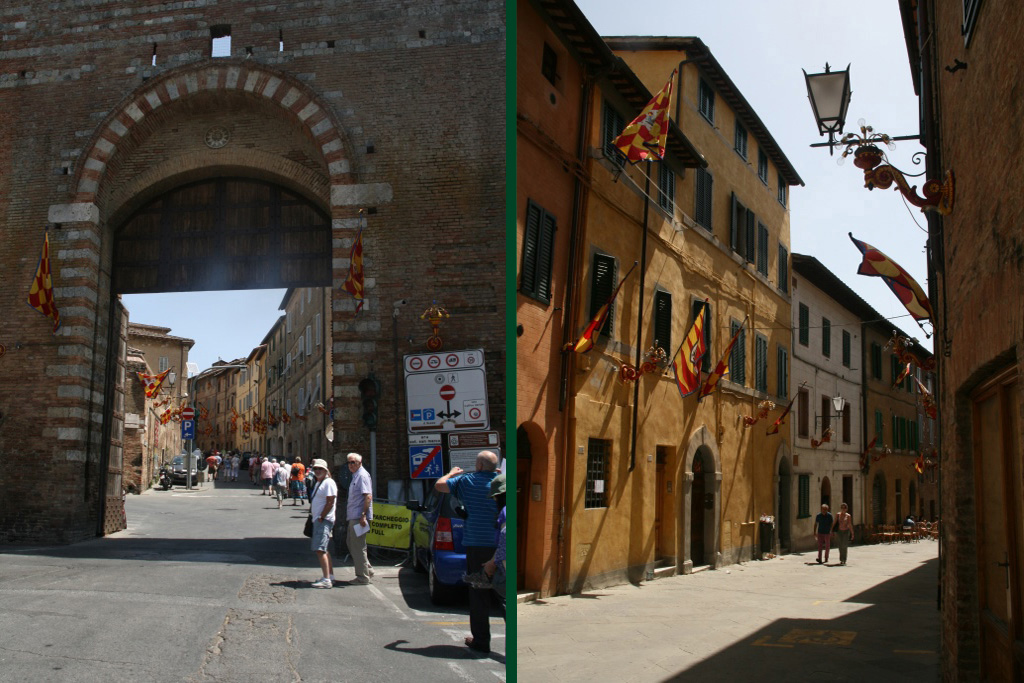
On our journey towards Rome we visited Siena in Tuscany, a beautiful medieval city that has been named as a UNESCO World Heritage site. The city can only be accessed on foot and is quite a stiff climb up the hill into the centre although of course Tony had driven us up the worst of it to the city gates. Like other Tuscan hill towns, Siena was first settled in the time of the Etruscans (c. 900–400 BC) when it was inhabited by a tribe called the Saina who changed the face of central Italy by irrigation to reclaim previously unfarmable land, and they built their settlements in well-defended hill forts.
According to local legend, Siena was founded by Senius the son of Remus who together with Romulus founded Rome; supposedly after their father's murder by Romulus, Senius and his brother fled Rome on white and black horses taking the she-wolf who suckled Remus and Romulus with them giving rise to the Balzana, or coat of arms of Siena with a white band atop a black band.
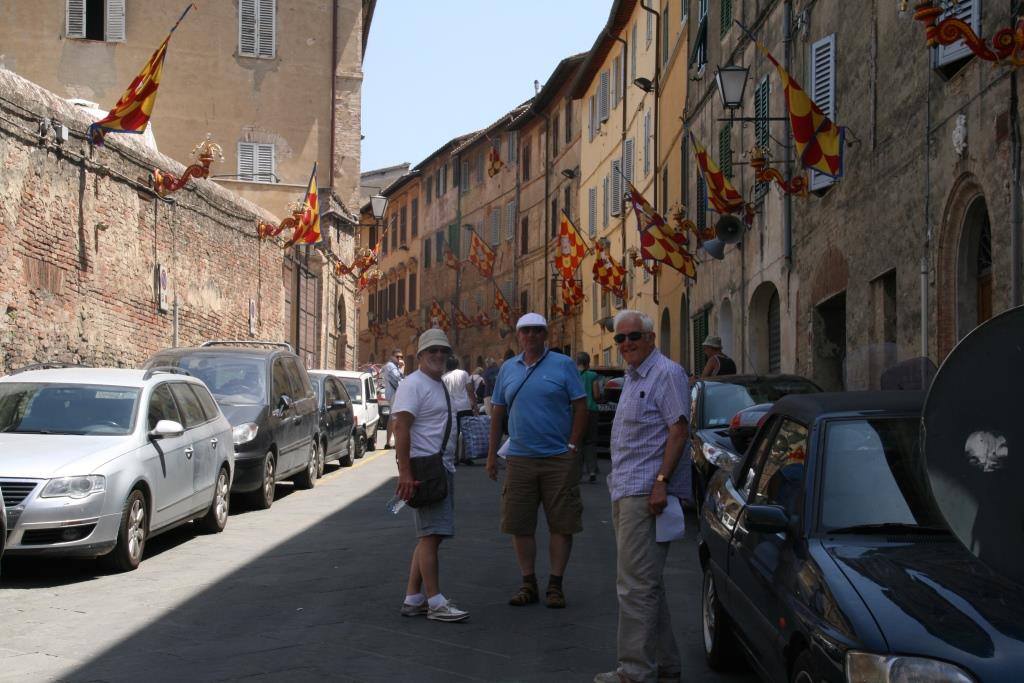
Wouldn't it be great for our photos if these old cities didn't allow cars on to the streets. The residents would probably be a bit upset but somehow the presence of these ugly modern contraptions against the backdrop of these wonderful, historical buildings is a bit incongruous Ah well the world is not perfect, LOL.
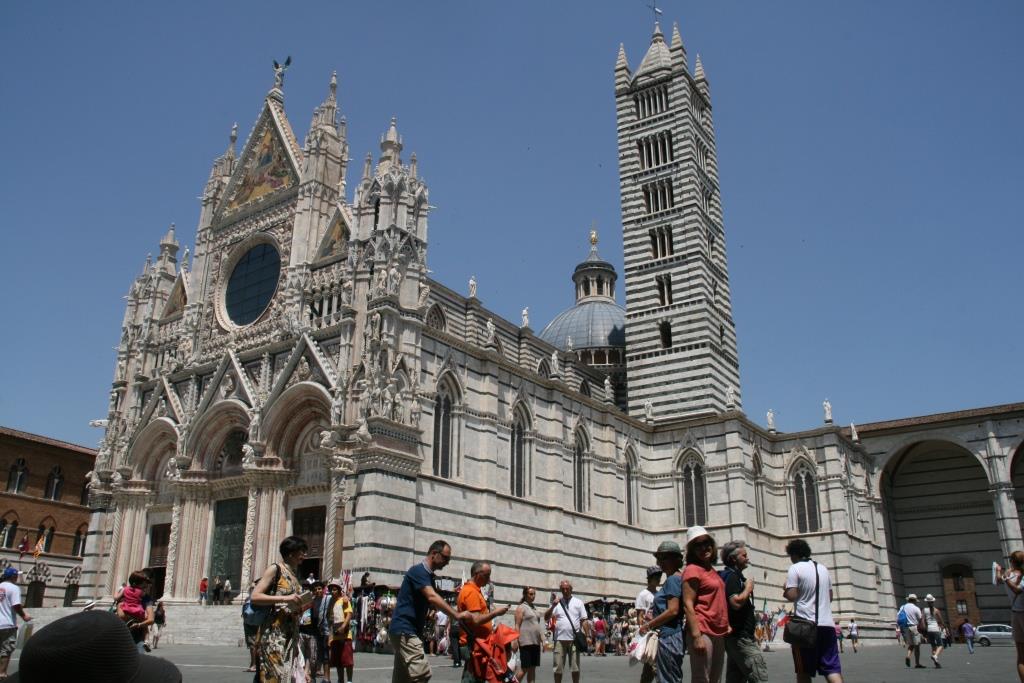
At the top of the hill is Siena Cathedral, designed and built in 1263 by Giovanni Pisano, which has one of the most impressive facades of any cathedral in Italy Although I might not be a great fan of cathedrals whenever I visit any of the great architectural feats of the renaissance period of the middle ages I'm always staggered by the magnificence of it. It's hard to imagine how much this work must have dominated the communities that lived in and around them and in our mechanised world how laborious much of this work must have been.
Nevertheless the result of this skill and flair and shear dedication and determination is there for future generations like us over 750 years later to admire; the designers, architects and craftmen must have been amongst the most important and admired people of their time and responsible for the livelyhood of whole communities.
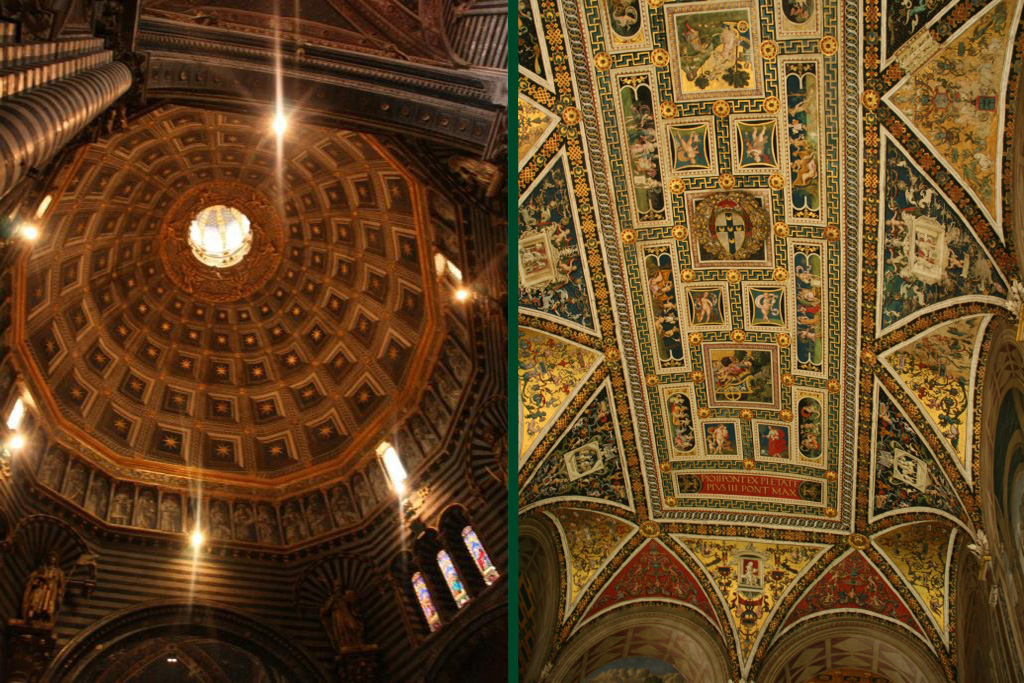
The dome and roof of the cathedral. Of course although the basic structure was built around 1250, most of the interior sculptures and paintings were done much later; the ceiling of the library (above right) is covered with painted panels of mythological subjects and painted between 1502 and 1503 by Pinturicchio and his assistants.

Some of the fantastic murals painted on the walls of the cathedral.
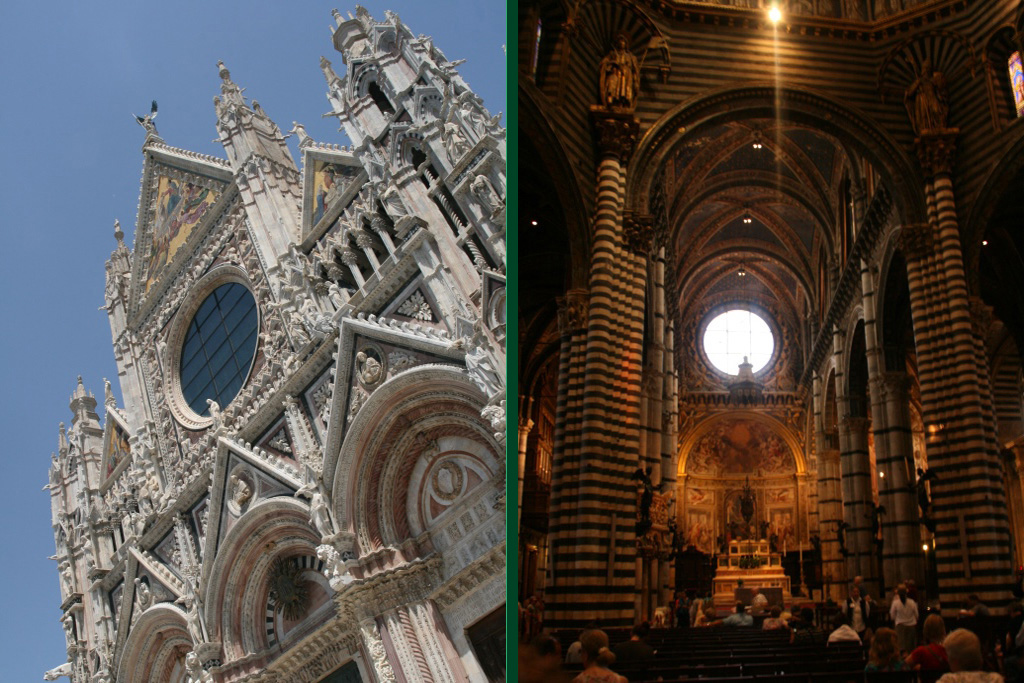
Pisano's design and sculptural ornamentation of the facade for the cathedral of Siena (on left) became the model for virtually all future Gothic facade decoration in central Italy. The work on the upper façade was not finished until around 1360 (Pisano died in 1315) and was completed under the direction of Giovanni di Cecco; the nave and pulpit (on the right) was sculpted by Nicola Pisano in around 1265 and is the earliest remaining work in the cathedral.
What all this tells me is that the catholic church was all important at a time when people needed a purpose in their lives; the work generated by the church building and decorating these cathedrals also gave people a job, helped indirectly to feed and cloth them and perhaps even took away any feelings of dissatisfaction with their lives that might then foment trouble (just me hypothesising).
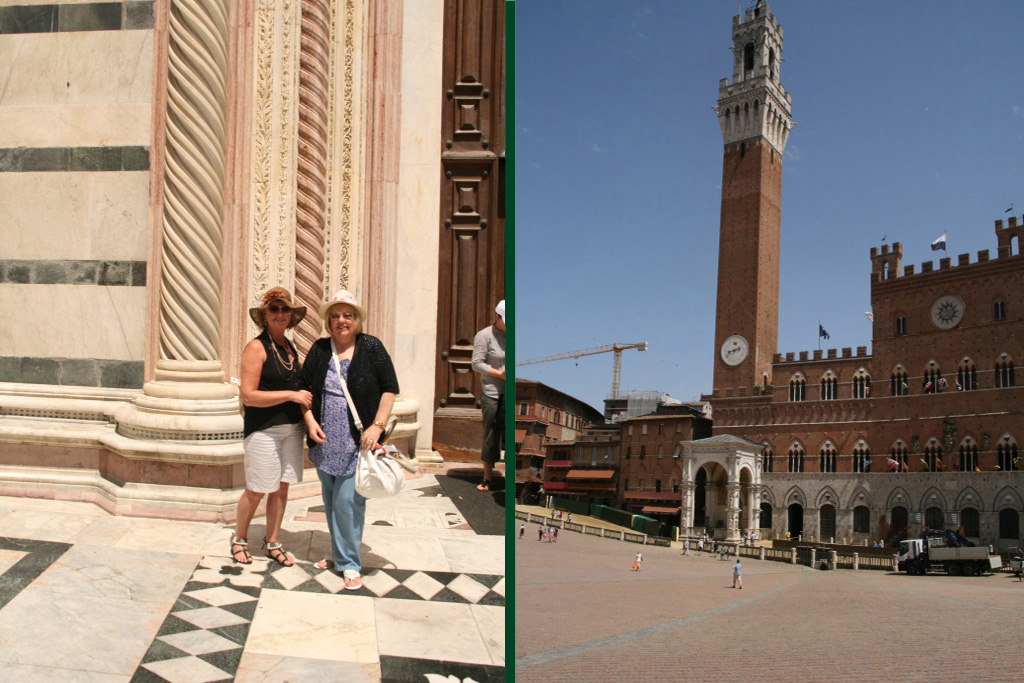
Jane and Olwen outside the cathedral. On the right, the Torre del Mangia is a bell tower built in around 1340 and located in the Piazza del Campo adjacent to the Palazzo Pubblico (Town Hall); whilst the cathedral was commissioned by the church, the Torre del Mangia was paid for by the state.
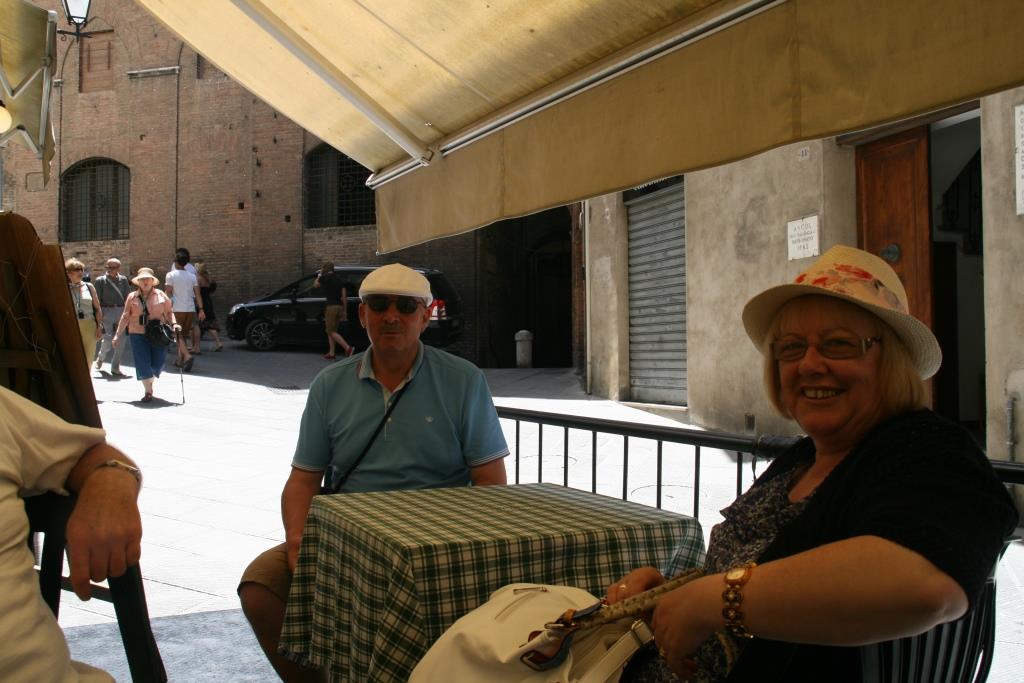
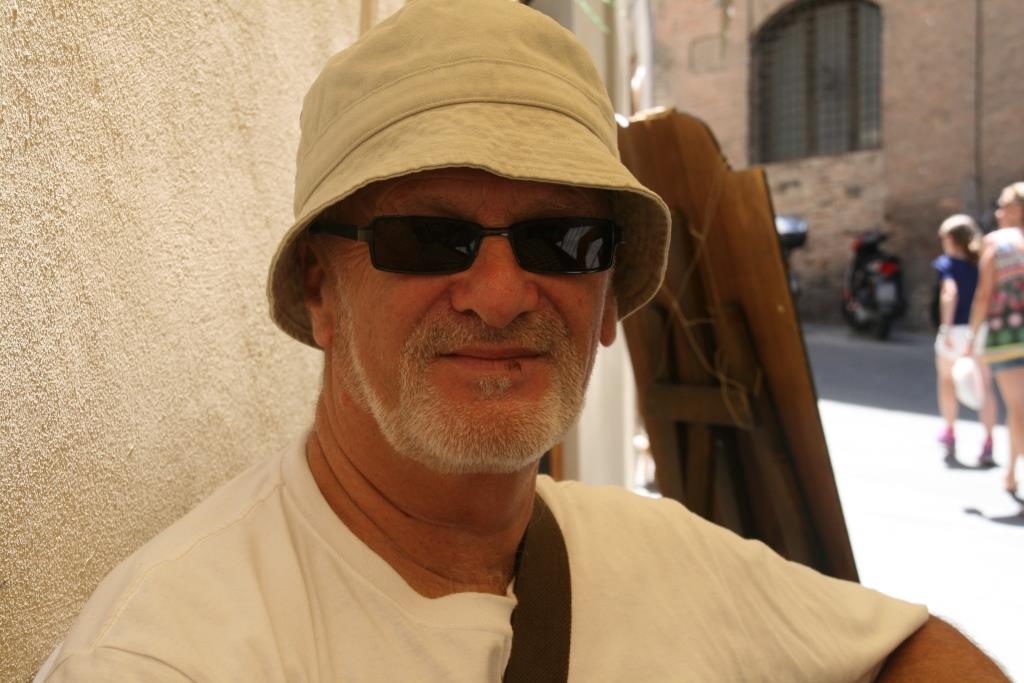

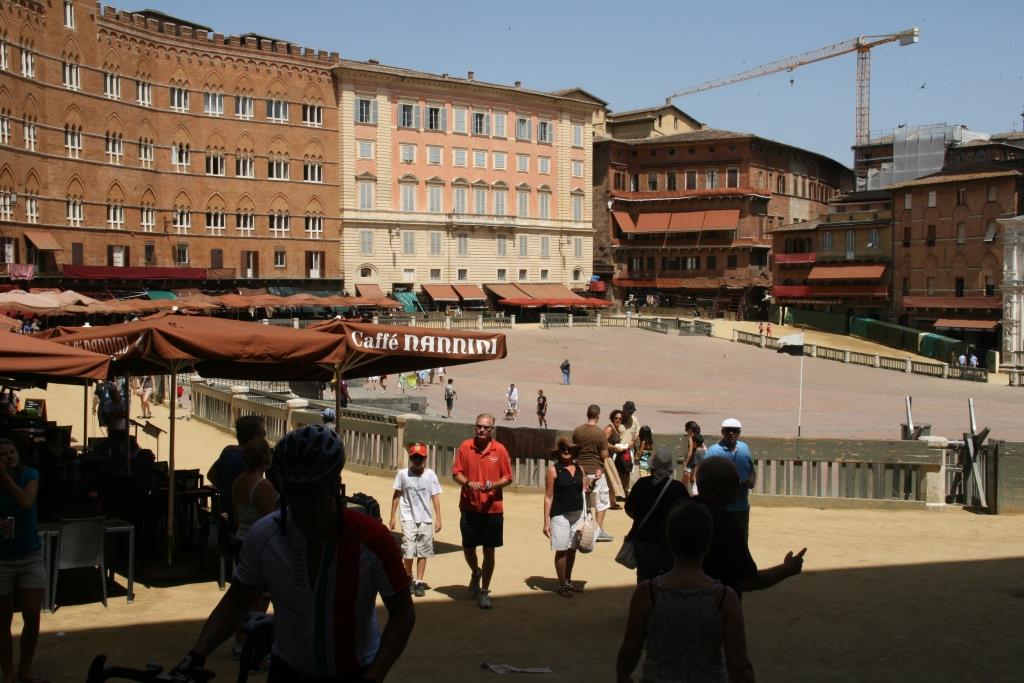
The Palio di Siena is a horse race that is held twice each year, on July 2 (Palio di Provenzano, in honour of the Madonna of Provenzano) and August 16 (Palio dell'Assunta, in honour of the Assumption of Mary); unfortunately we missed it by just two days and they were preparing for the first race whilst we were there. Ten horses and riders, bareback and dressed in the appropriate colours, represent ten of the seventeen contrade, or city wards.
A pageant, the Corteo Storico, precedes the race and the race itself, in which the jockeys ride bareback, circles the Piazza del Campo, on which a thick layer of dirt has been laid, three times and usually lasts no more than 90 seconds. It is common for a few of the jockeys to be thrown off their horses while making the treacherous turns in the piazza, and indeed, it is usual to see unmounted horses finishing the race without their jockeys.
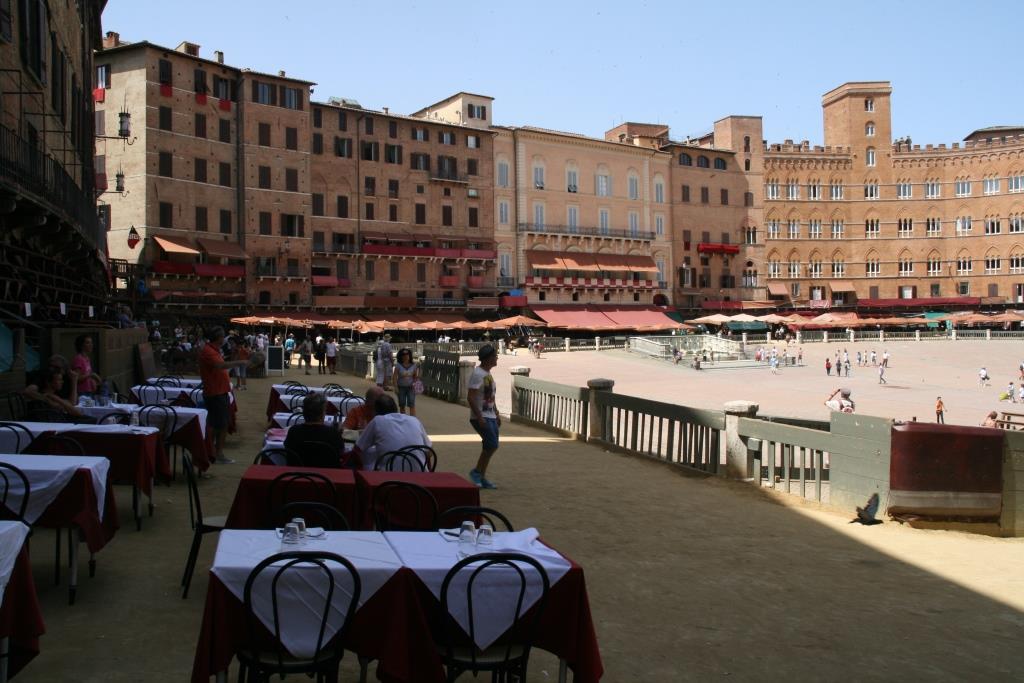
Here you can see the preparations for the big event with tables set up for spectators and food tents round the edge - this must be quite a sight and a must for a future Leger trip (my suggestion to Leger is to look seriously at making this part of a future coach tour - I would book that for sure).
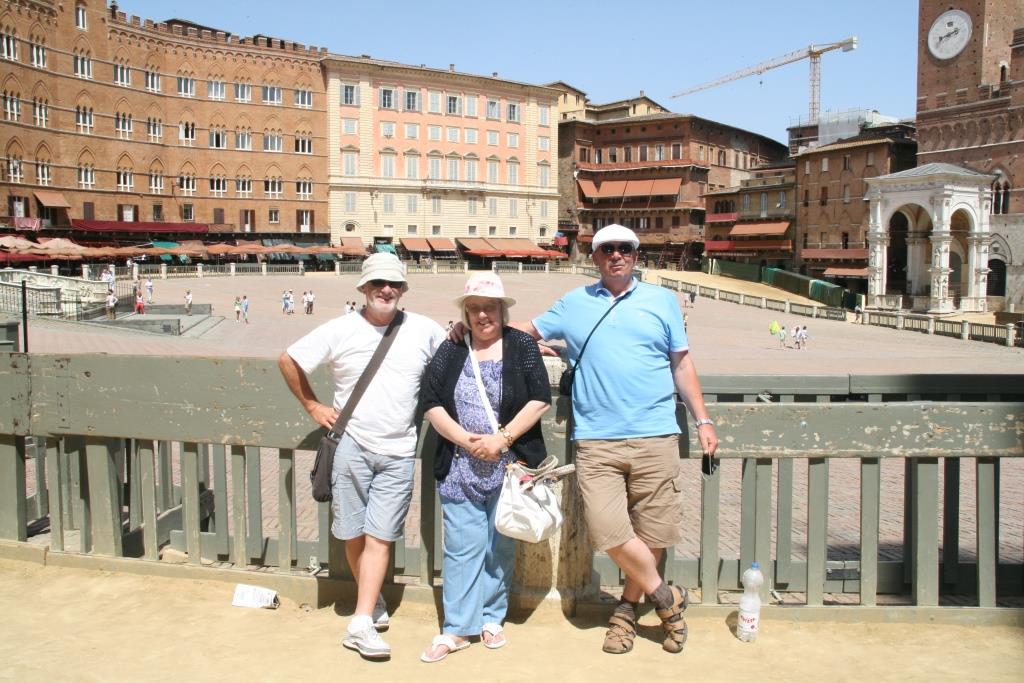
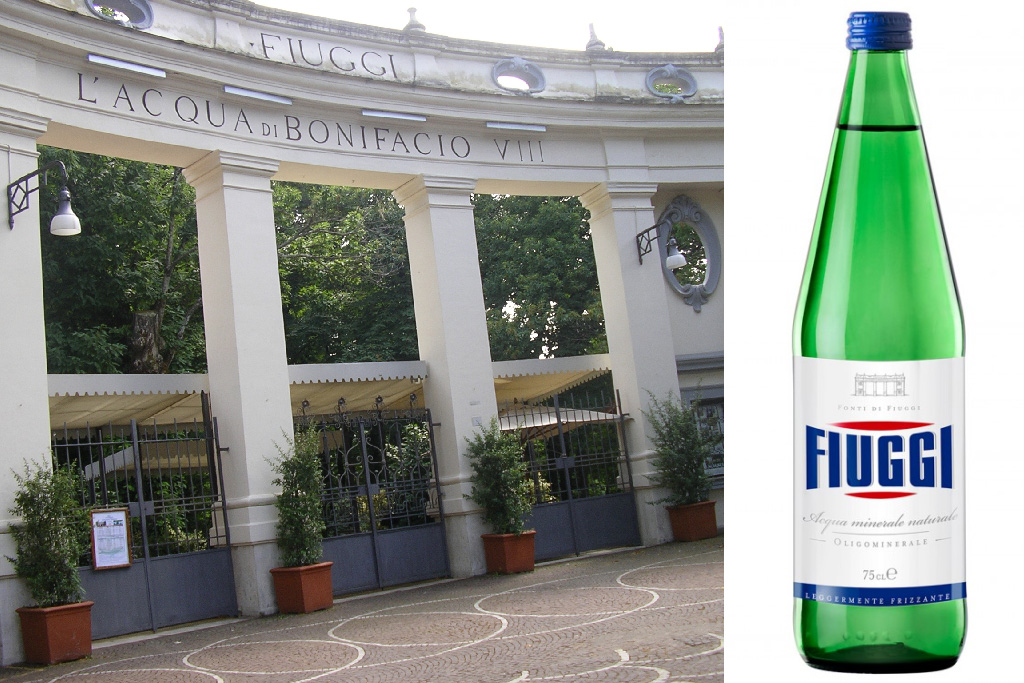
We left Siena and carried on to Fiuggi, a short drive to Rome; an added bonus was that the manager of the hotel had a big screen TV set up ready for the Euro Final which was on the 1st July, the day we returned from our trip to Rome.
The only problem I have writing this blog to include Fiuggi is that although we stayed there for 3 days I can only remember the hotel and the road by the hotel. I can't remember anything about the town itself which from my research appears to be a quite spectacular place with a hilltop setting and some fantastic views. Fiuggi is famous for its Acqua di Fiuggi (Fiuggi Water) which flows from its natural springs and mountains I have no photos of the place and few memories; perhaps the hotel we stayed at is somewhere on the outskirts of the town but it's a shame that we have no stories or tales to tell other than we watched the Euro Cup Final there!!
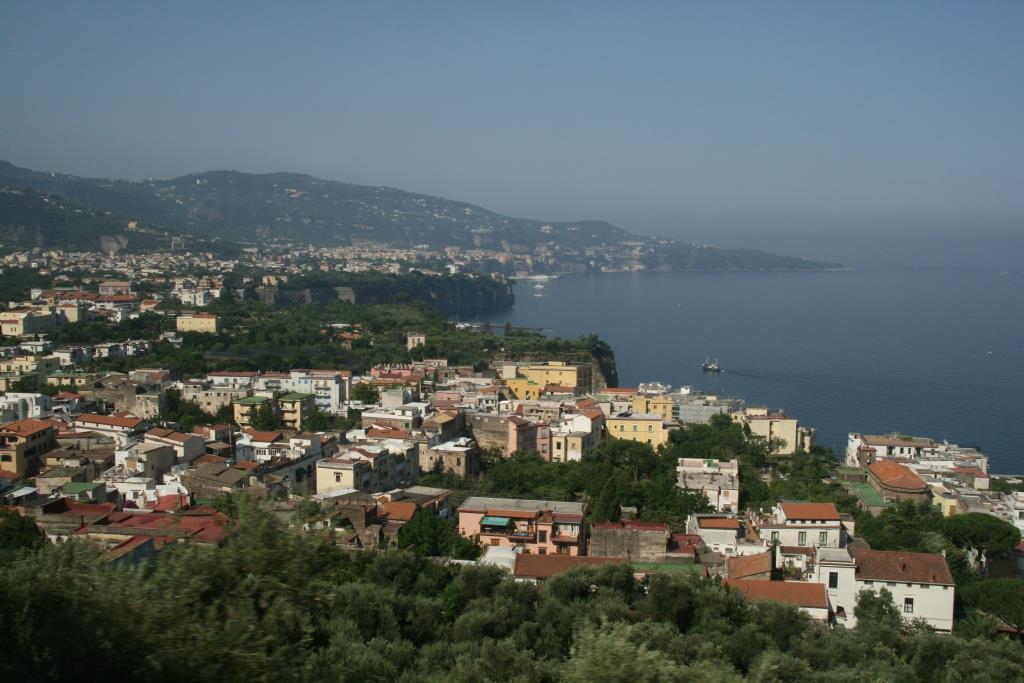
The next day we set off for Sorrento before boarding a ferry for the romantic island of Capri. Sorrento seems a pretty place but we didn't stay long in the port and apart from a few photos have little to say about the place. Some of our passengers used the stop at Sorrento to leave the group and make their own way by train to Pompeii and one day we will probably do the same as we have never been there We could see Mount Vesuvius in the distance and of course this is still an active volcano, one of three volcanos in Italy classed as active (with Etna and Stromboli), and last erupted in 1944. The most famous eruption that buried and destroyed Pompeii was in AD79.
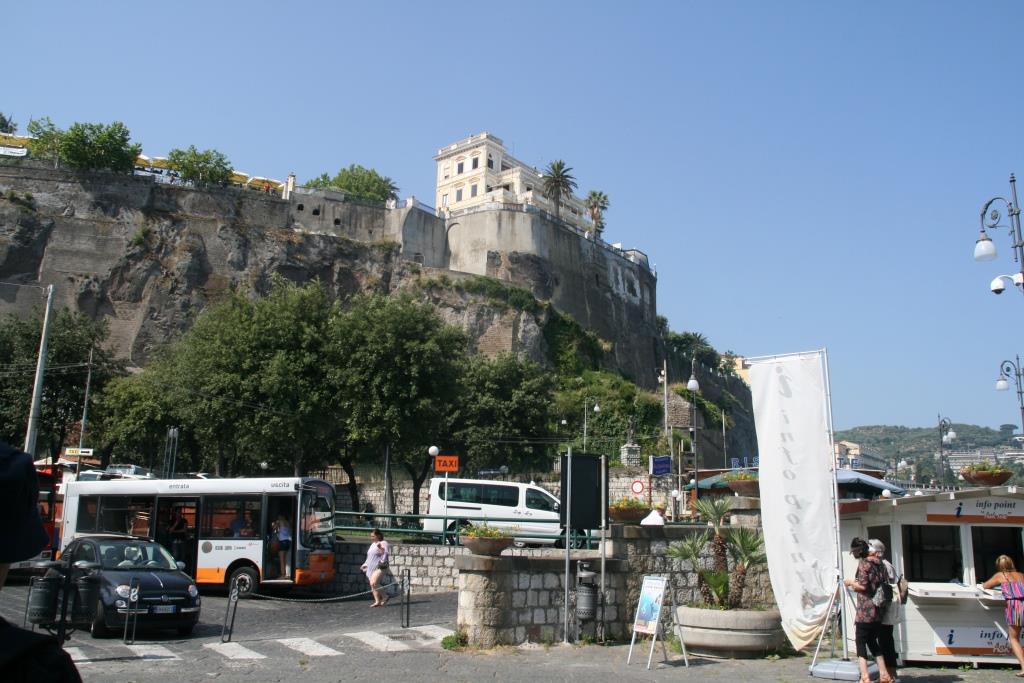
Sorrento

Capri has two sides to the island that are distinctly different; you land at the Marina Grande, which is on the north of the island facing into the Bay of Naples but on the south side there is a small landing place, the Marina Piccola and there is a single road connecting the two sides. Capri itself is quite small with some shops and restaurants but not much else; there is a commune on the west side of the island called Anacapri which has a chairlift up to the top of Mount Solari but really other than that there is not a lot to see on the island.
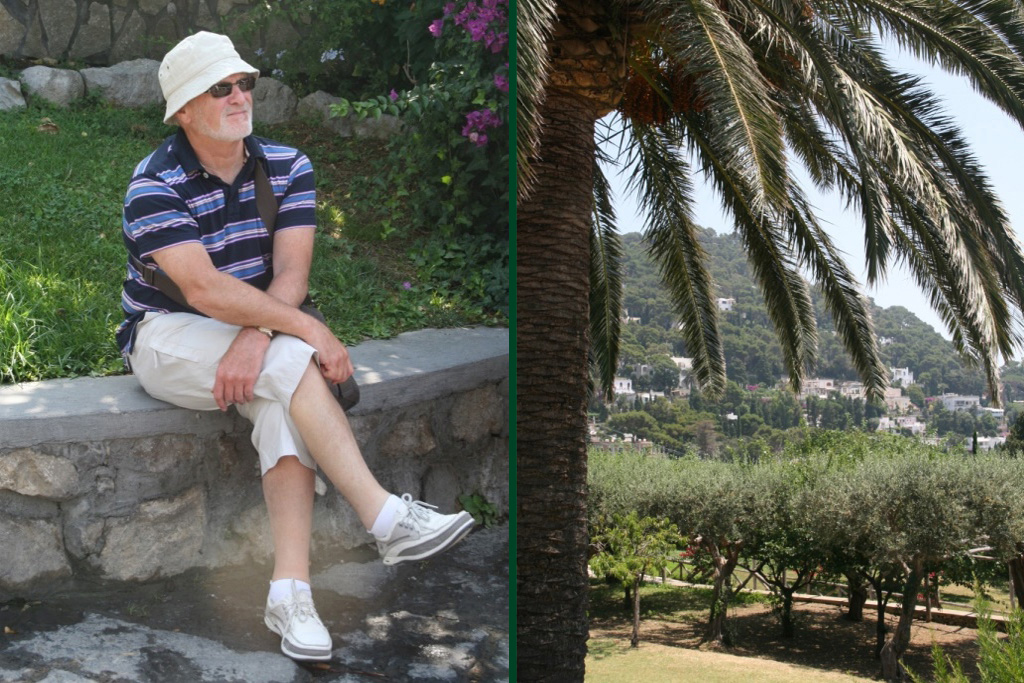
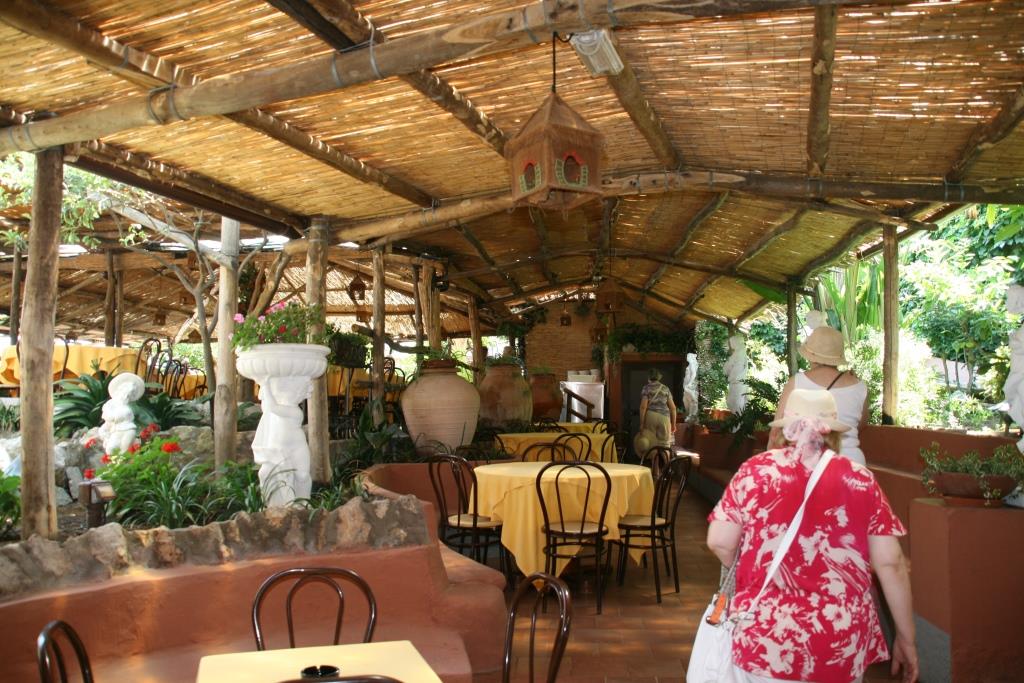
The restaurant we had lunch in at Capri.
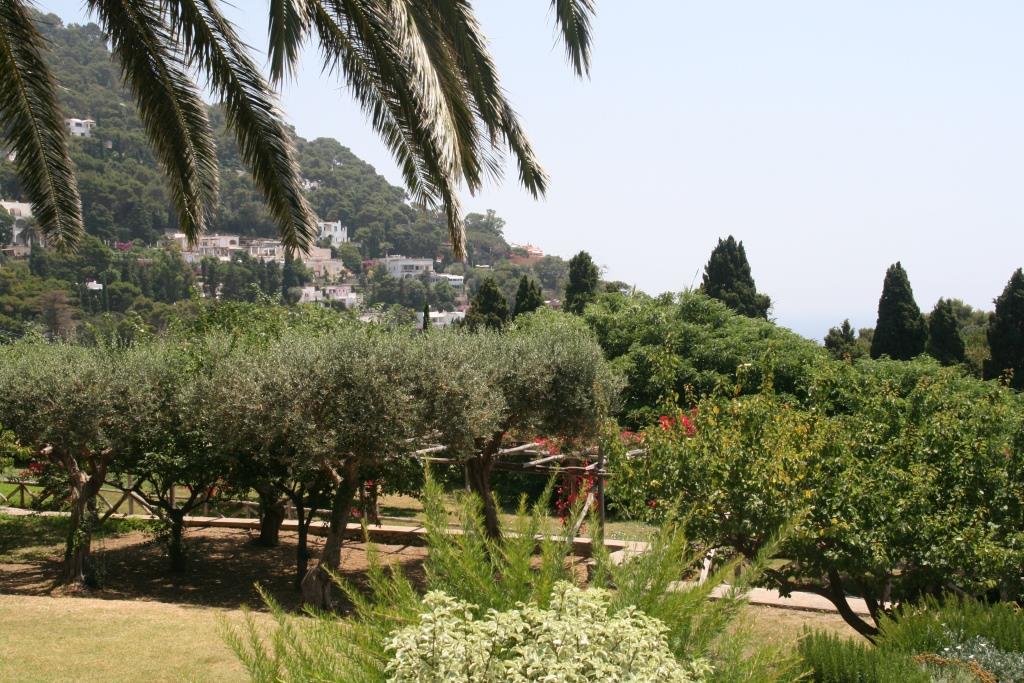
The gardens of the restaurant.
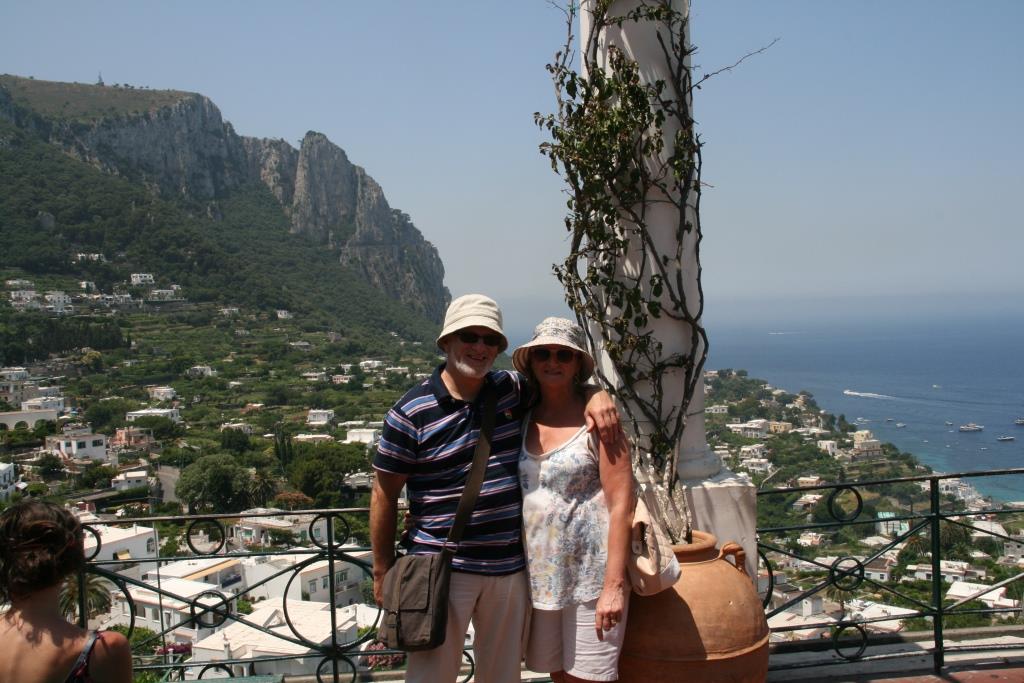
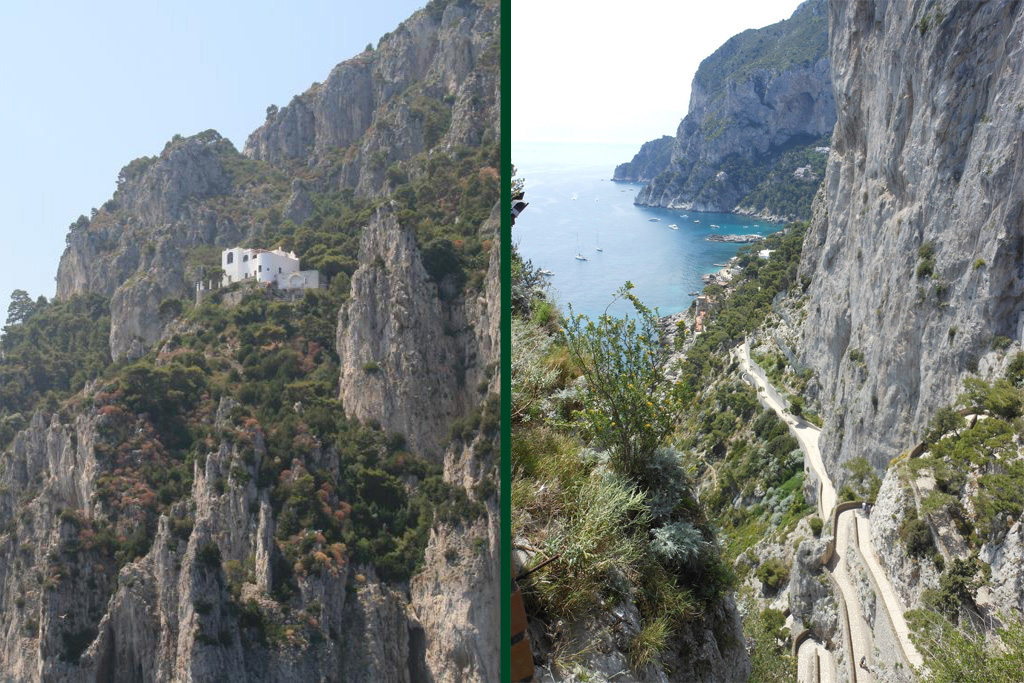
Whenever you see these houses perched on the cliffs have you ever wondered how the hell they get their cars up there, if they do; well the inset image shows you how but I don't think the cars can get up that. What a place to live and what a view it must be - no nosy neighbours to spy on you if you sunbath in the nude either. This villa belonged to both Valentino (the clothes designer) and Sophia Loren (the actress).
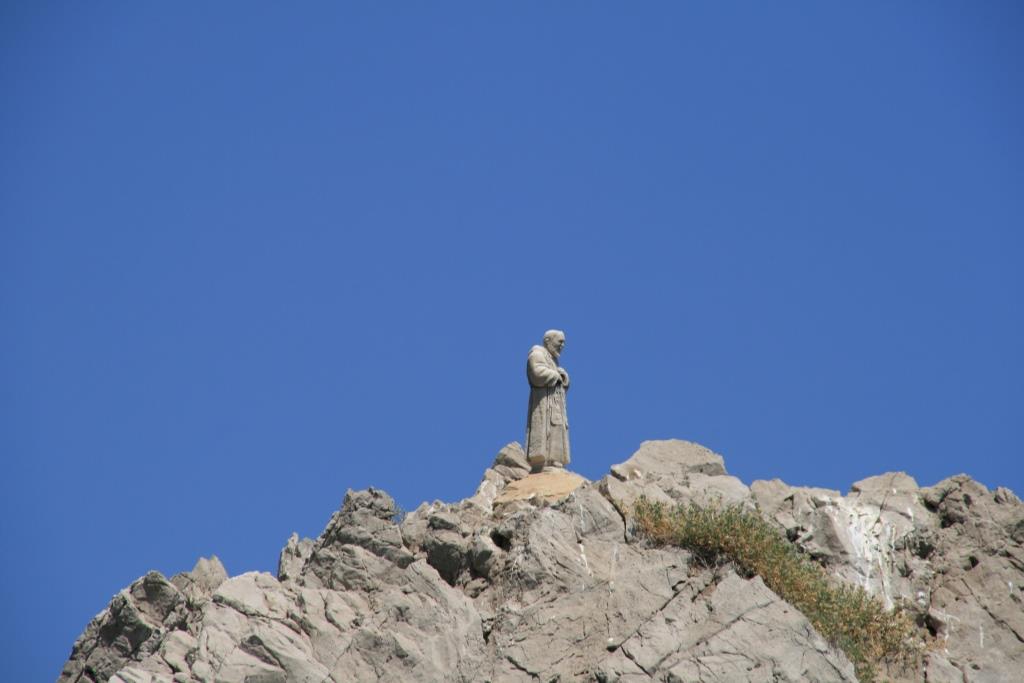
Statue of Padre Pio on the cliffs overlooking the Bay of Naples.
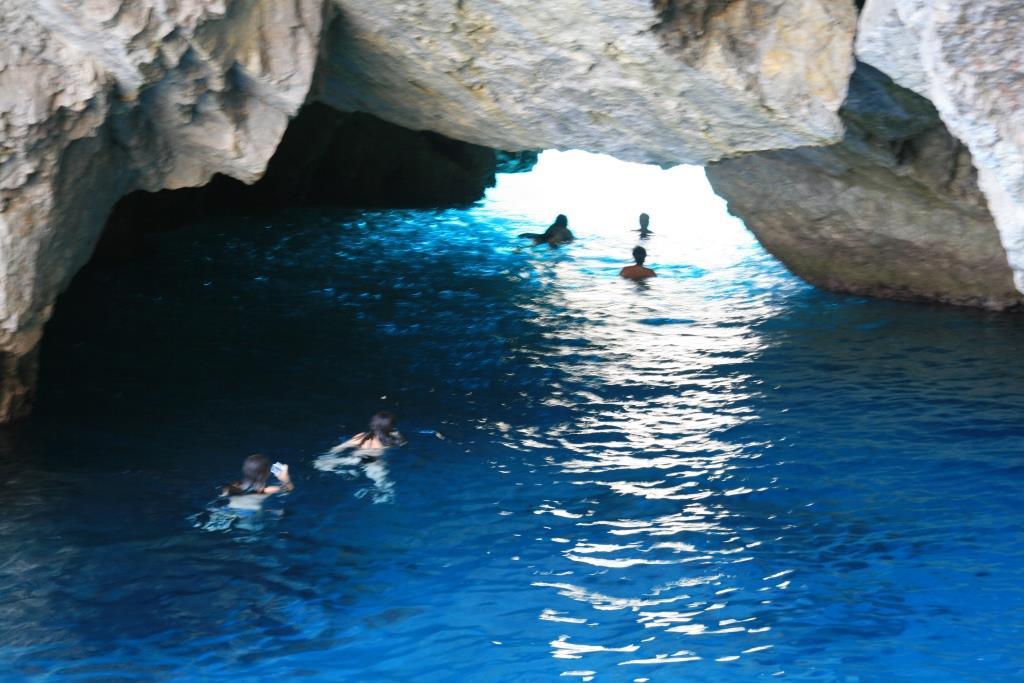
Makes you want to put your trunks on and jump in; look at the colour of the water.
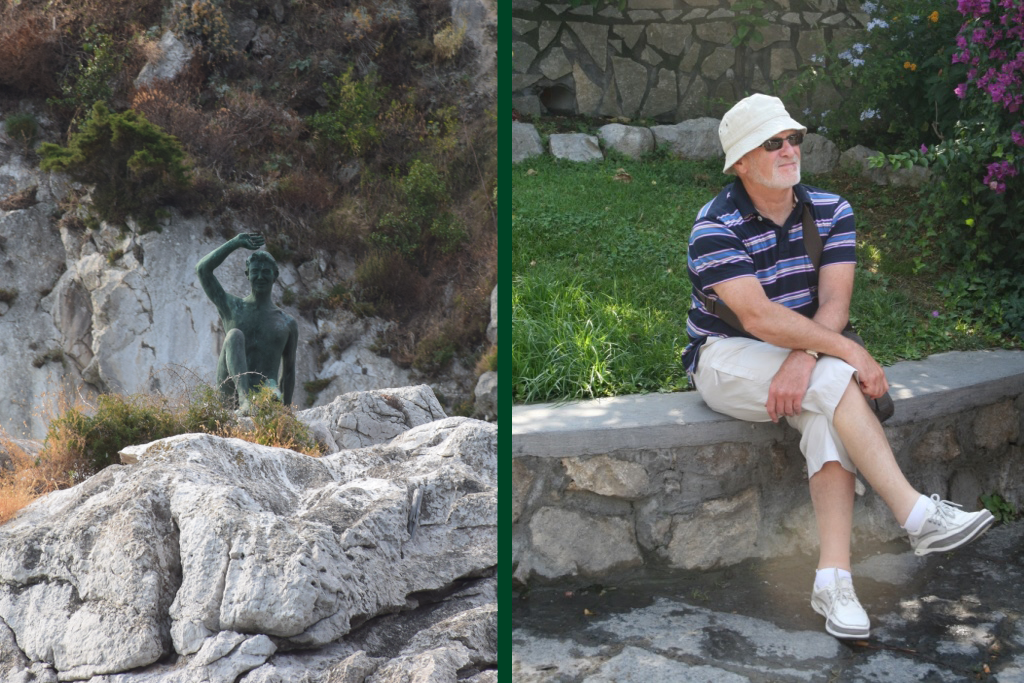
The man on the left is called the Statua Dello Scugnizzo – a bronze statue of a young man who welcomed those coming by boat to Capri; you can see the resemblance with the man on the right.
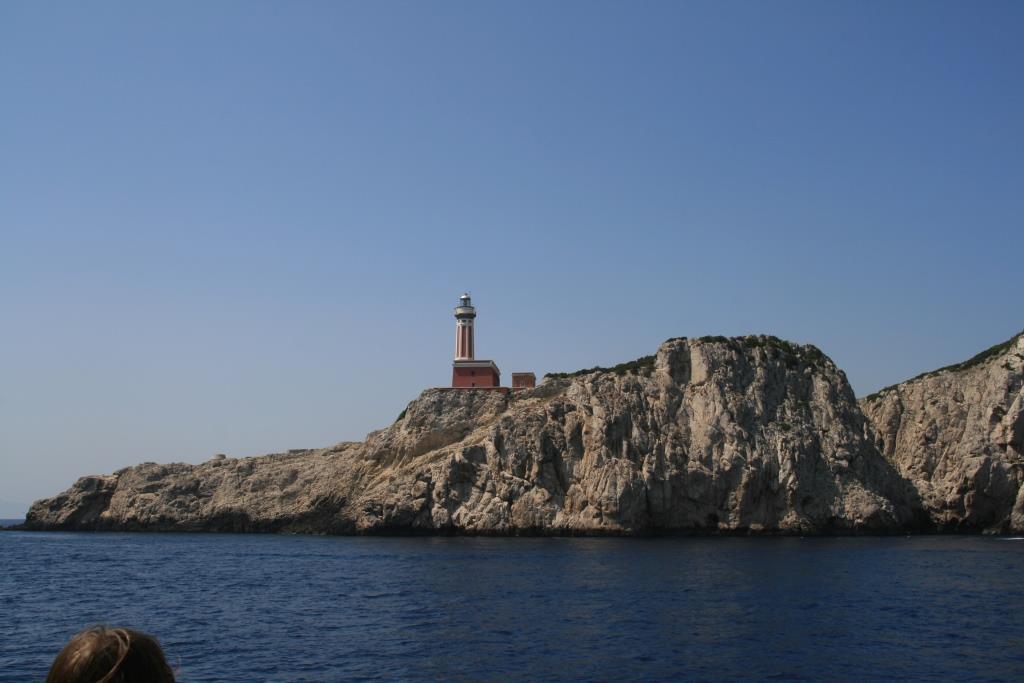
The Lighthouse of Punta Carena. Looming behind the lighthouse, there is the precipice of the Migliera, lined with defense walls built by the British at the start of the 19th century in order to protect Capri from invasion. In front of the lighthouse, the sea extends all the way to Sicily.

Who is this mysterious woman of Capri?
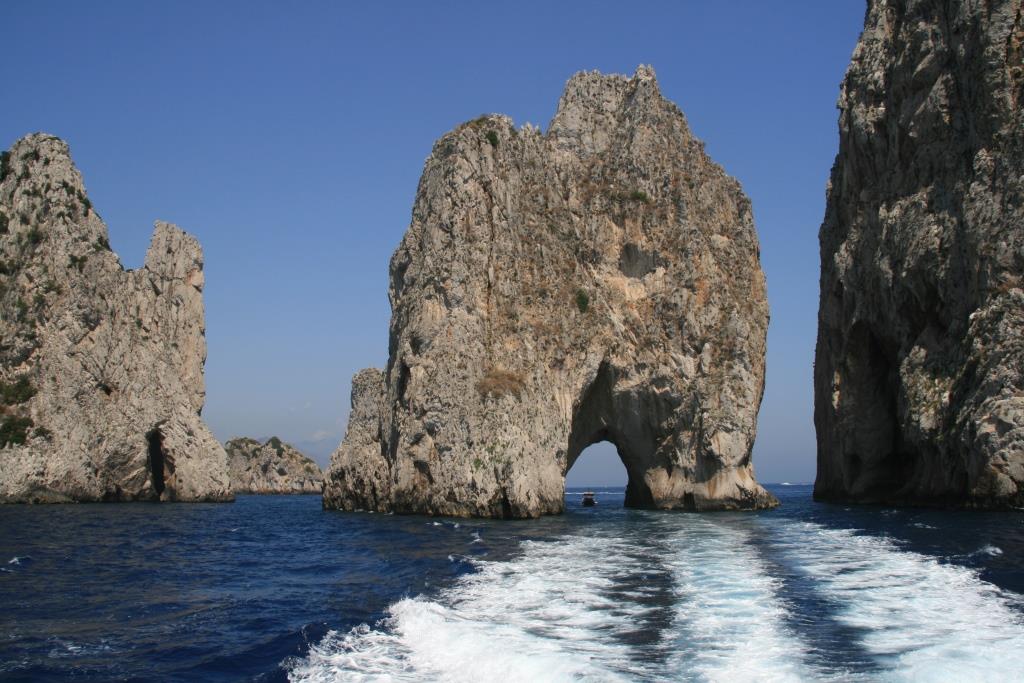
The faraglioni off the south coast of Capri are stacks, a coastal and oceanic rock formation eroded by waves This is where all the rich people in their super yachts moor when they visit Capri, far away and out of sight of the tourists, unless you are also on a boat like us
.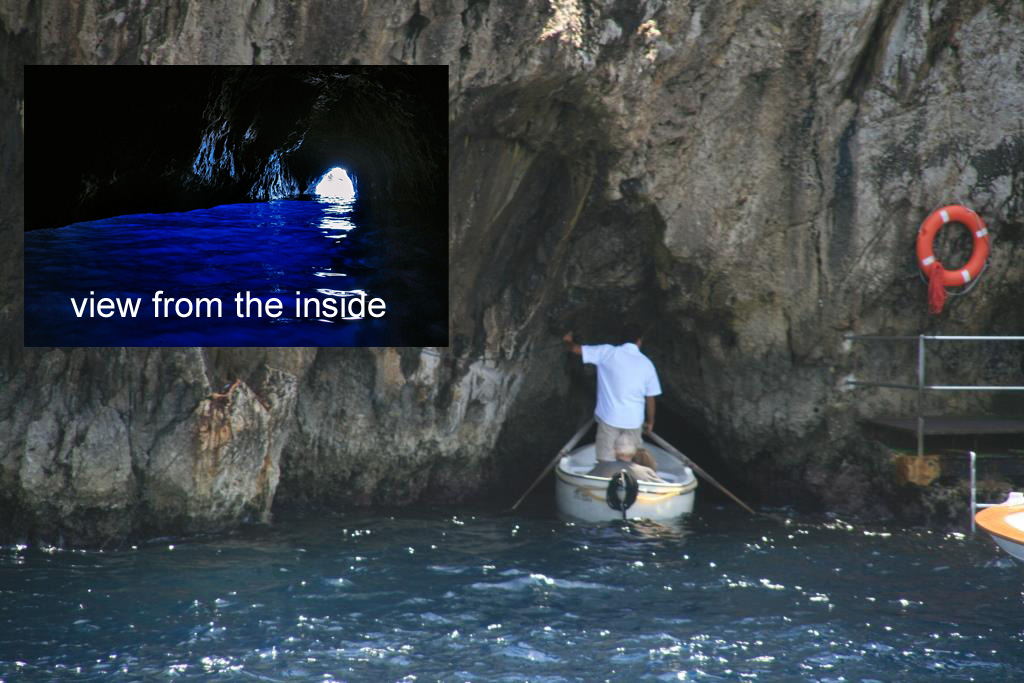
As we came round the west side of the island we were shown the famous Blue Grotto or Grotta Azzurra which is a sea cave where sunlight, passing through an underwater cavity and shining through the seawater, creates a blue reflection that illuminates the cavern. The entrance to the cavern is by small boat as the opening is only 2 metres wide by 1 metre high and as you can see the small boat has only one or two passengers and guide who have to duck low to get through; access to the cave can only be achieved at low tide Needless to say the nearest we got to the cave was this photo.
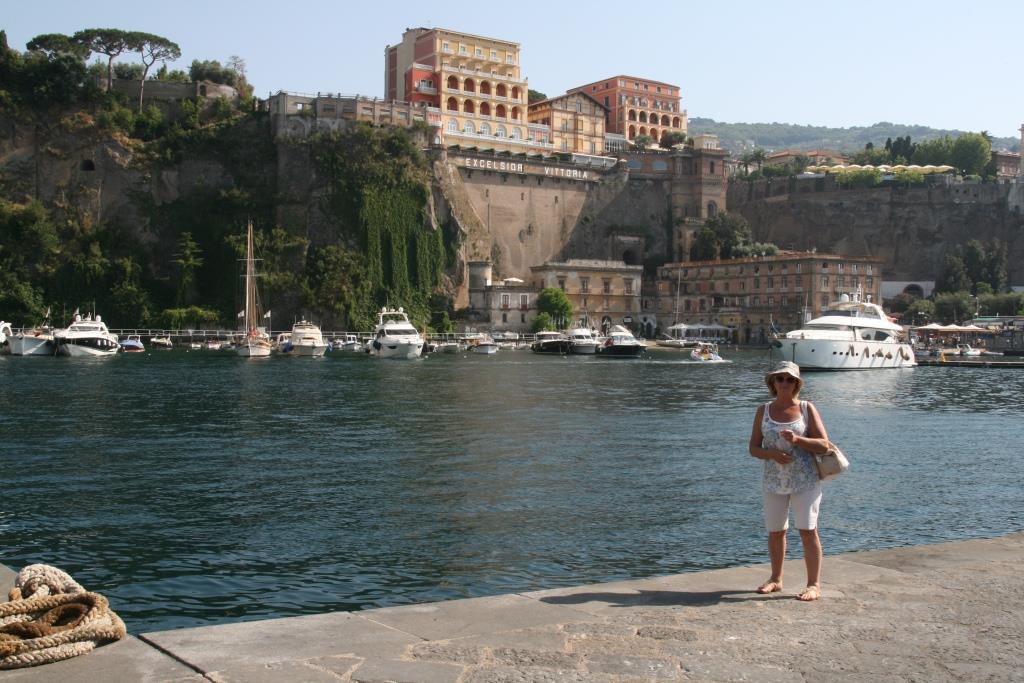
The harbour at Sorrento.
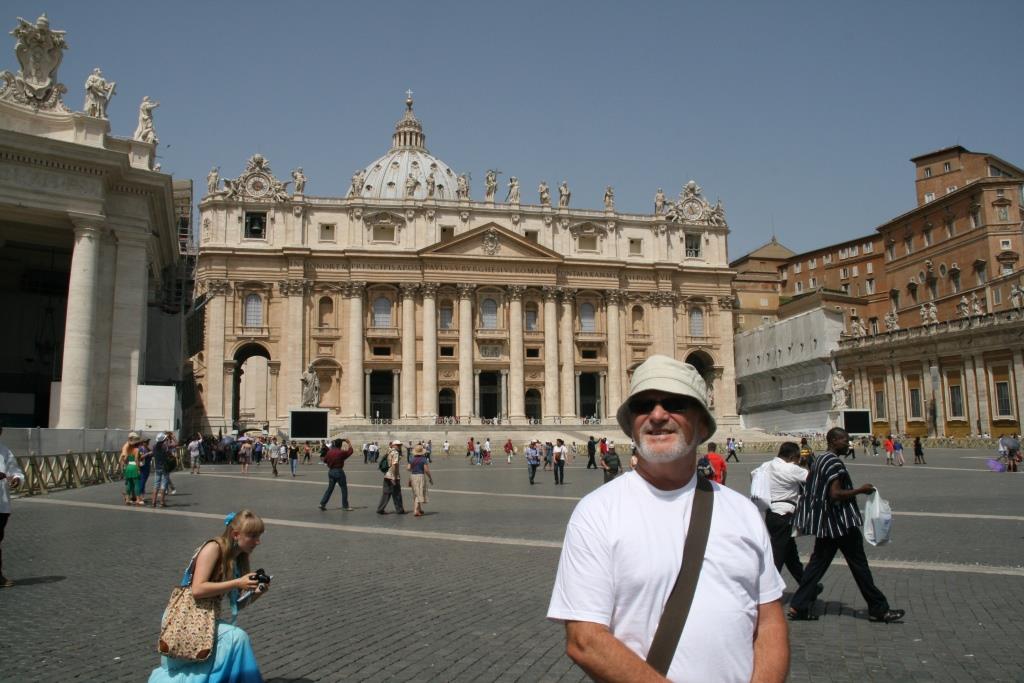
St Peters Square with the Basilica in the background.
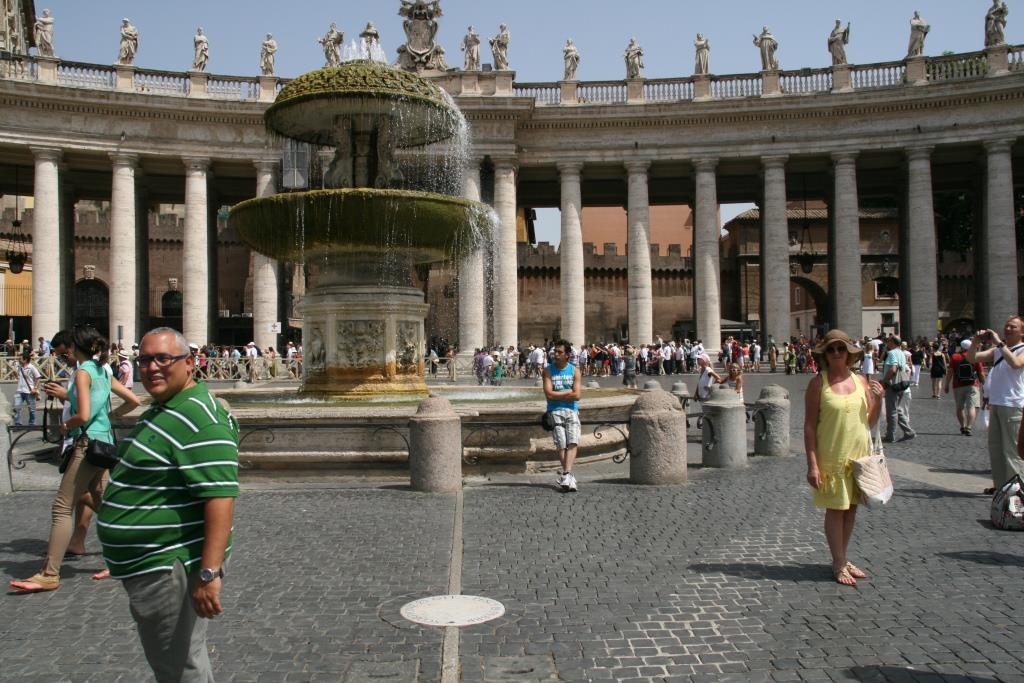
The Bernini fountain in the center of St Peter's Square. The colonnades in the background were built in 1660 and 140 statues created by Bernini and his students to depict popes, martyrs, evangelists and other religious figures were were installed on top of the colonnades.
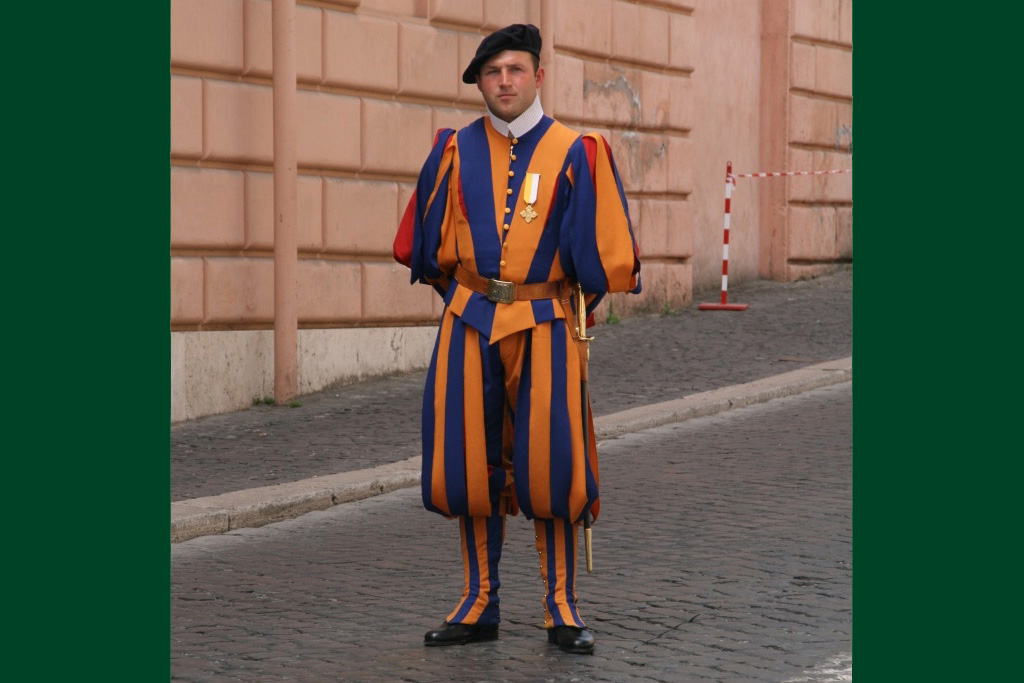
The Swiss Guard in the Vatican City had their origins during the Renaissance and were Helvetian soldiers (mercenaries in effect), renowned for their courage, noble sentiments and loyalty and on January 22nd, 1506 a group of one hundred and fifty Swiss soldiers commanded by Captain Kasparvon Silenen, of Canton Uri, passed through the Porta del Popolo and entered for the first time the Vatican where they were blessed by Pope Julius II. The Swiss Guard are the Pope's bodyguards and recruits must be Catholic, single males with Swiss citizenship who have completed basic training with the Swiss military and must be between 19 and 30 years of age, at least 5 ft 8.5 in tall and have a professional degree or high school diploma.
They have a reputation for self-sacrifice and bravery, as demonstrated during the sack of Rome in 1527, when all but 42 of the 189 guardsmen died defending Pope Clement VII. During WW2, the Swiss Guards prepared for similar self-sacrifice when the vastly outnumbered guardsmen took up defensive positions as German forces rolled into Rome; Adolf Hitler, however, chose not to attack the Vatican.
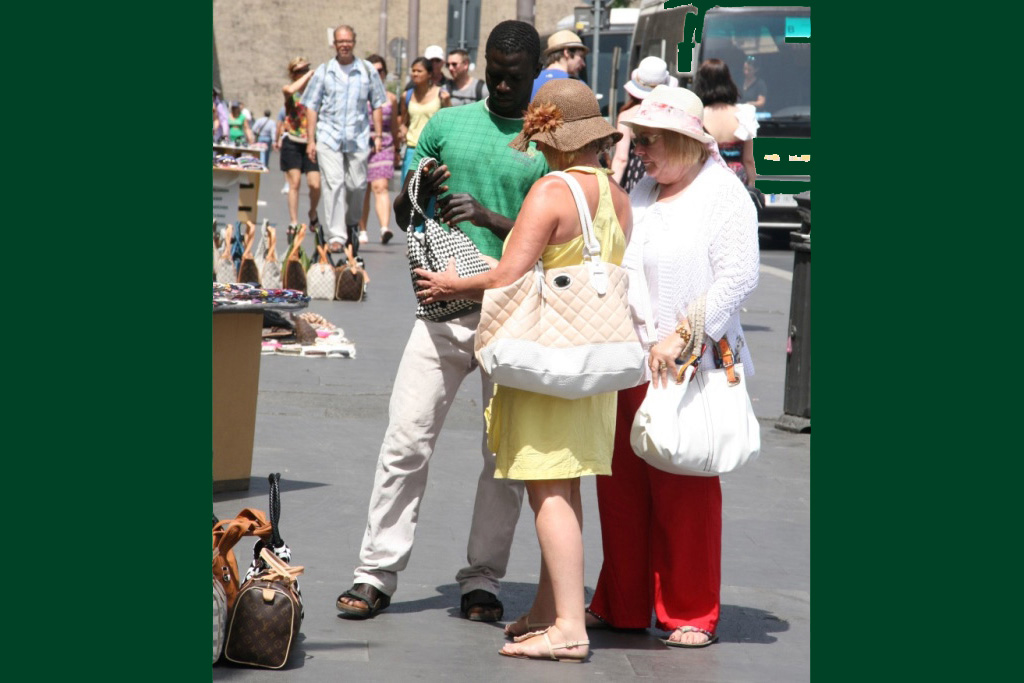
Buying handbags from the local looky-looky man.
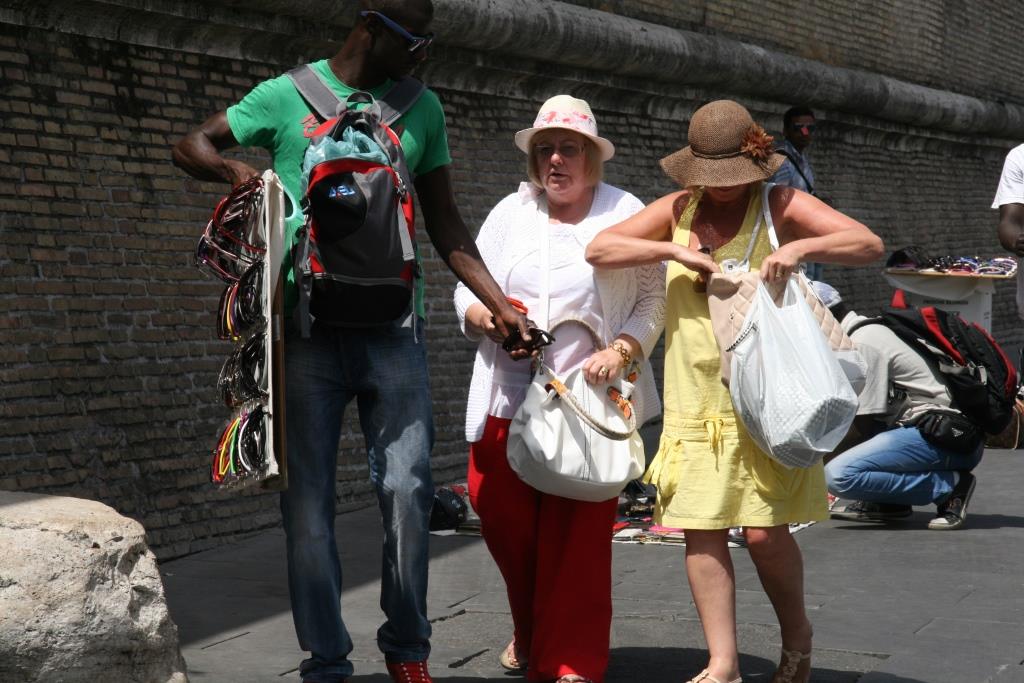
Keep your purses closed girls!

Wall of The Vatican State.

This was the queue to get into the Basilica - not for me.

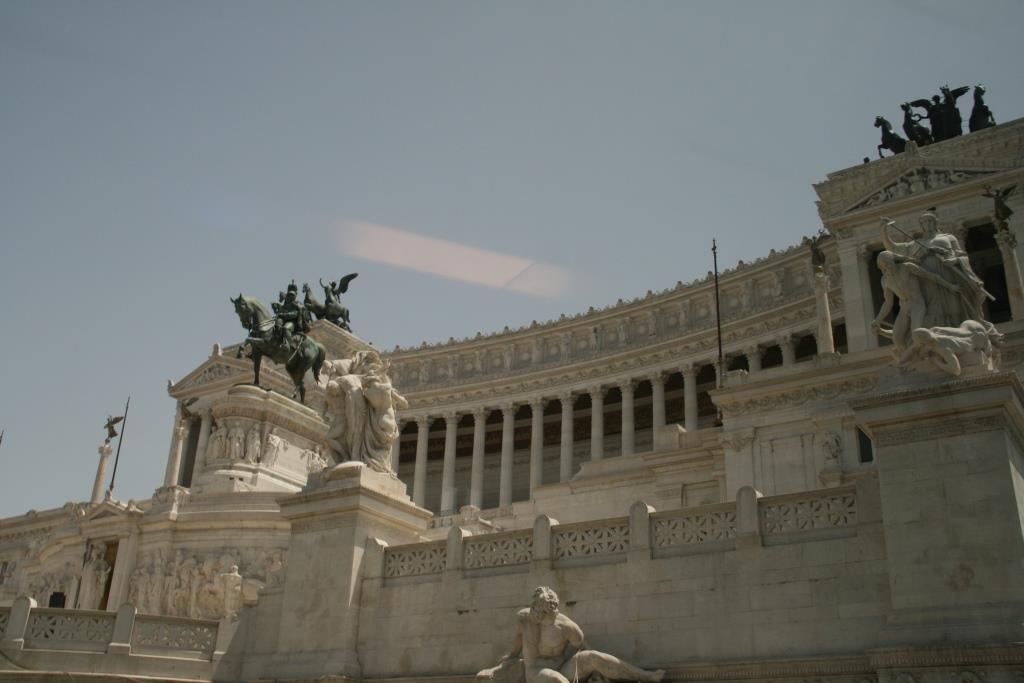
Love it or loathe it, as most locals do (they call it the 'wedding cake'), you can't ignore the Vittoriano the massive mountain of white marble that towers over Piazza Venezia at the top of the Capitoline Hill that was built in 1885 (but not finished until 1911) to honour Italy's first king, Victor Emmanuel II. Guarded by soldiers, a flame burns on the front terrace of the monument to mark the grave of an unknown soldier; also referred to as the Altar of the Fatherland (Altare della Patria).
It's been said rather unkindly that the Vittoriano is taller than the Saturn V rocket and that over 20 people attended a banquet in the stomach of the horse in the equestrian statue of King Vittorio Emanuele II when it was completed. This might seem a bit unfair but located in the Piazza Venezia at the top of the Capitoline Hill, it dominates and is visible all over Rome; part of the antipathy of the locals towards it stem from the fact that part of the Capitol which was the central and sacred hill of Ancient Rome was destroyed when it was built. It's also been said that that the only people who actually like it are tourists, who by definition have no cultural memory.

The equestrian statue of Vittorio-Emmanuele II. The story about dining inside the horses stomach must be untrue as you couldn't possibly get so many people inside the horse!! - LOL
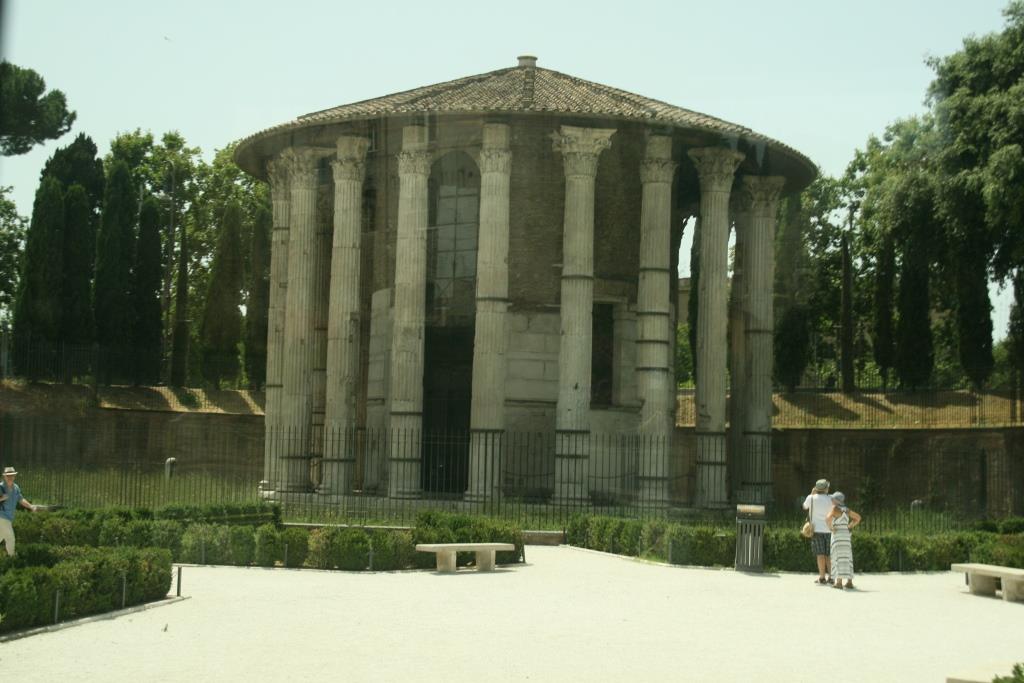
Temple of Vespa also known as the Temple of Hercules Victor, built in the first century B.C. and one of the oldest buildings in Rome.
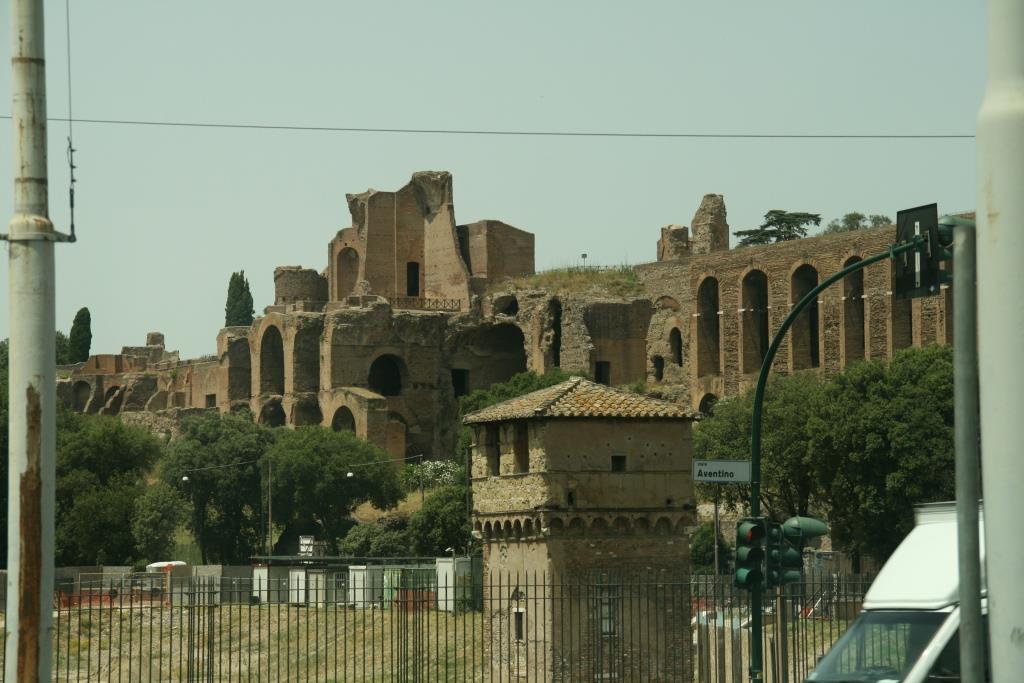
This is the location by the Aventine Hill of the remains of the Roman Forum and demonstrates to me the value of researching the place before visiting and not after as I have done. This area of Rome is the epicentre of many ancient remains including , Circus Maximus, the Arch of Constantine, the Colisseum, the Palatine Hill and others. We had no idea really what we were looking at when we were there and no idea of the history behind it. The Palatine Hill especially is one of the seven Hills of Rome and is one of the most ancient parts of the city and is where the first settlers built their huts, under the direction of Romulus In future I intend to make sure I know the history before I go and one day I will revisit this place ready to take in fully what I am seeing.
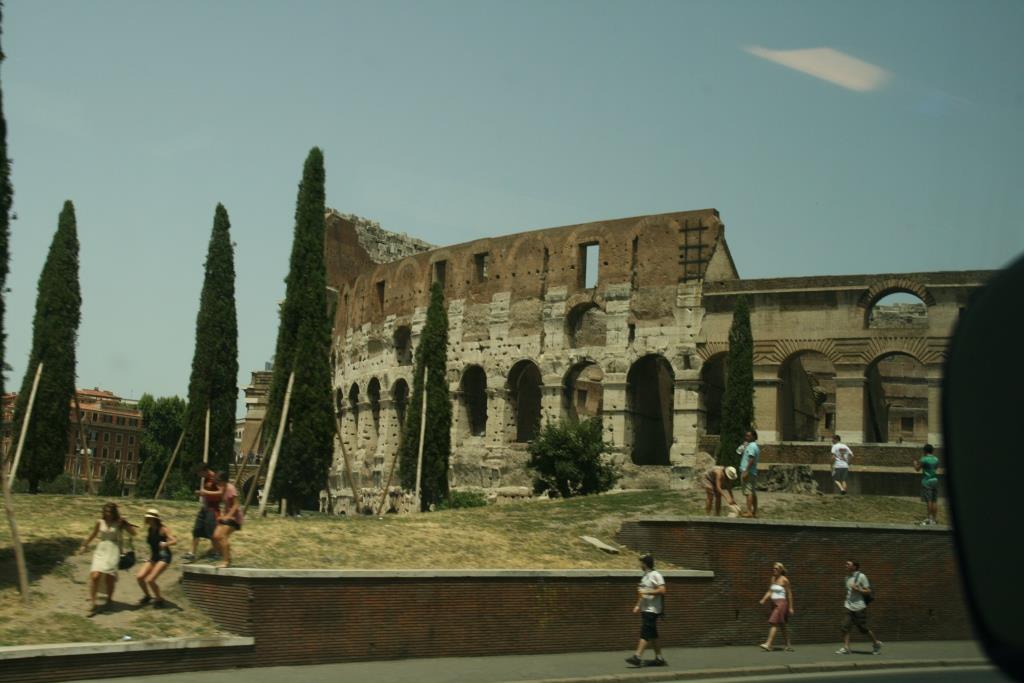
Remains of the Circus Maximus; this was the oldest Roman stadium and entertainment venue and was mainly used for chariot races which could last from dawn to dusk and were organized there for nearly 1,000 years. The last race took place in 549 AD.
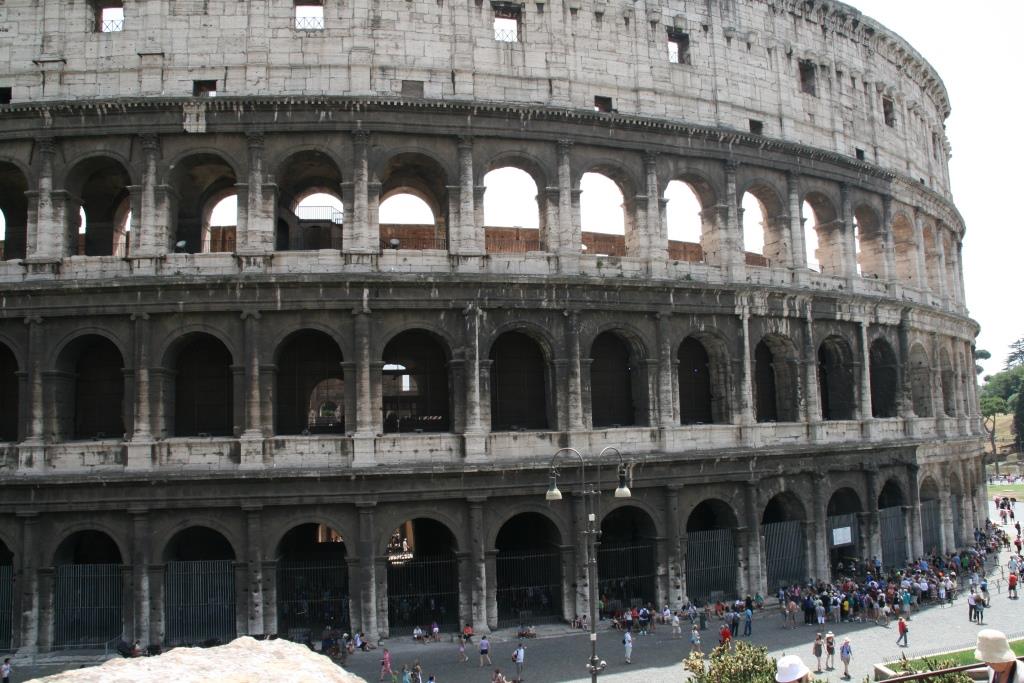
Our first sight of the Colisseum. This is obviously an iconic building and is every bit as impressive when you see it as you would expect it to be. It must have been an awesome sight when thousands of Romans were streaming through the arches to get in to see the 'games'. The arches were constructed to allow as many people in to watch as quickly as possible. Roman gladiators were usually slaves, prisoners of war or condemned criminals. Most were men, but there were a few female gladiators. These combats were attended by the poor, the rich, and frequently the emperor himself. One contest after another was staged in the course of a single day for the gratification of the audience. Should the ground become too soaked with blood, it was covered over with a fresh layer of sand and the performance went on. The gladiatorial games continued until Christianity progressively put an end to those parts of them which included the death of humans.
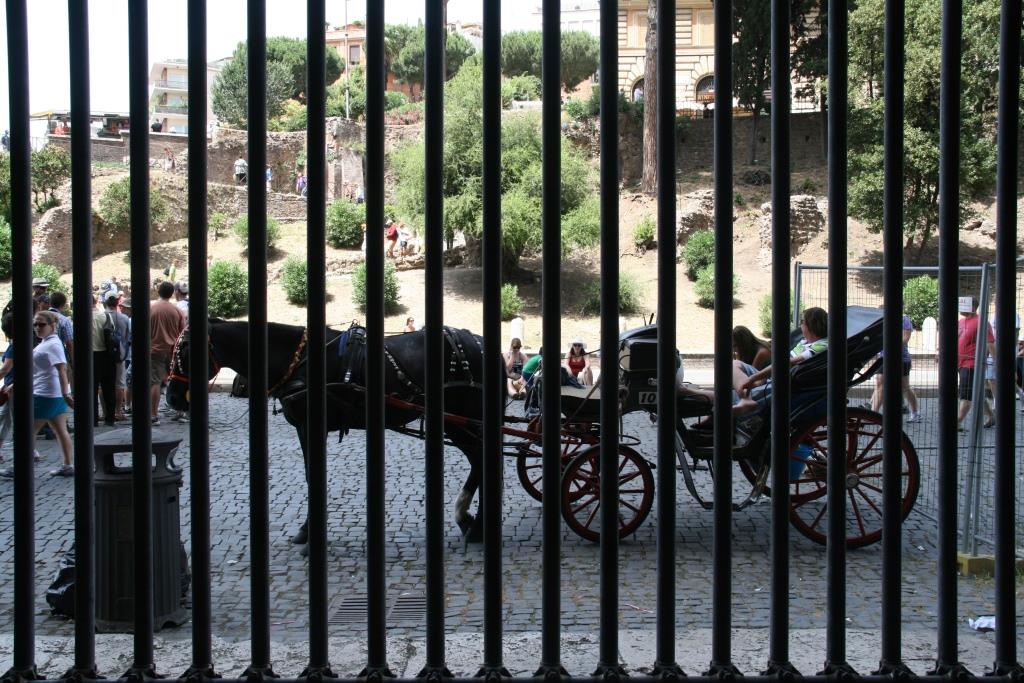
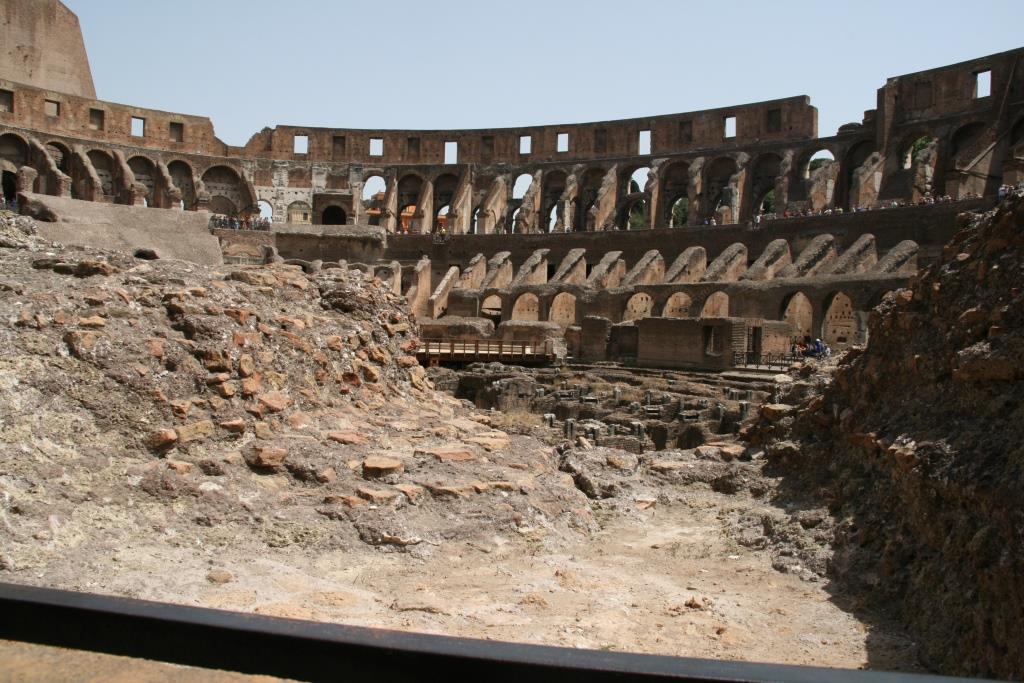
As you can see as well as the outside walls, which are quite well preserved on one side where you go in, but not so much on the other side and inside the Colisseum there is considerable damage to the internal structure, almost to the point where it is difficult to see how it was when in its prime.
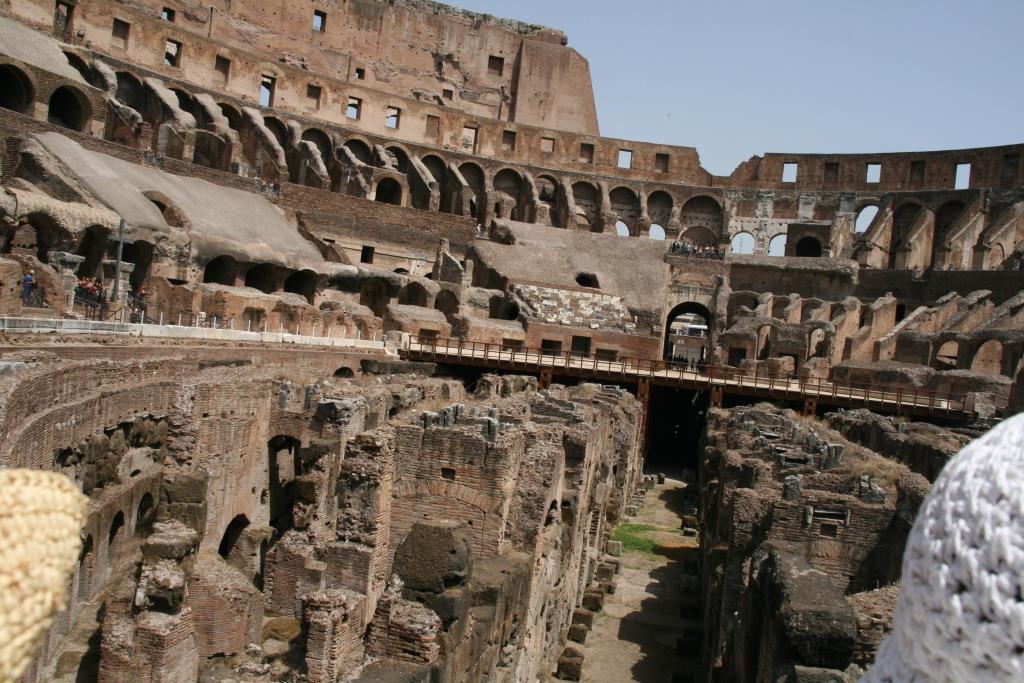
This picture illustrates very well what it was like below the arena where the contestants and the animals were housed (i.e. below ground), essentialy without any light until they were brought into the arena to kill or be killed.
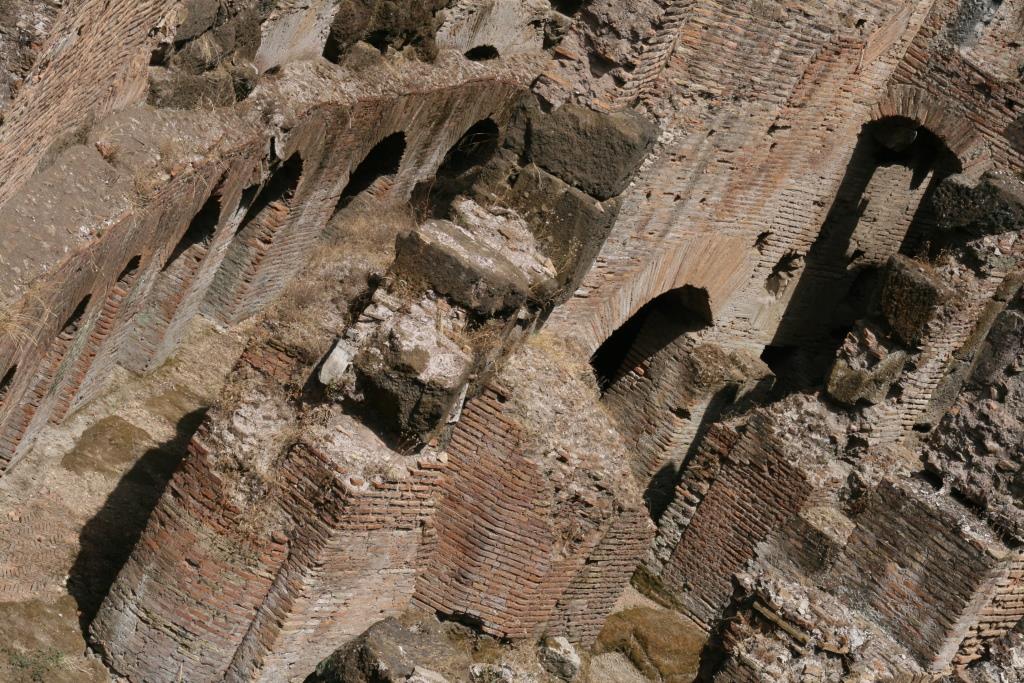
Subterranean cells where the gladiators lived in between fights. If they managed to avoid being killed, gladiators could have a reasonable life and if exceptionally successful and liked by the audience could win their freedom, known as manumission. Very few gladiators lived beyond 10 fights and most died before their 30th birthday. Whilst the Colisseum is the most well known it has been estimated that there were around 400 similar arenas throughout the Roman Empire and that there were around 8,000 deaths per annum from gladiators and other 'performers'.
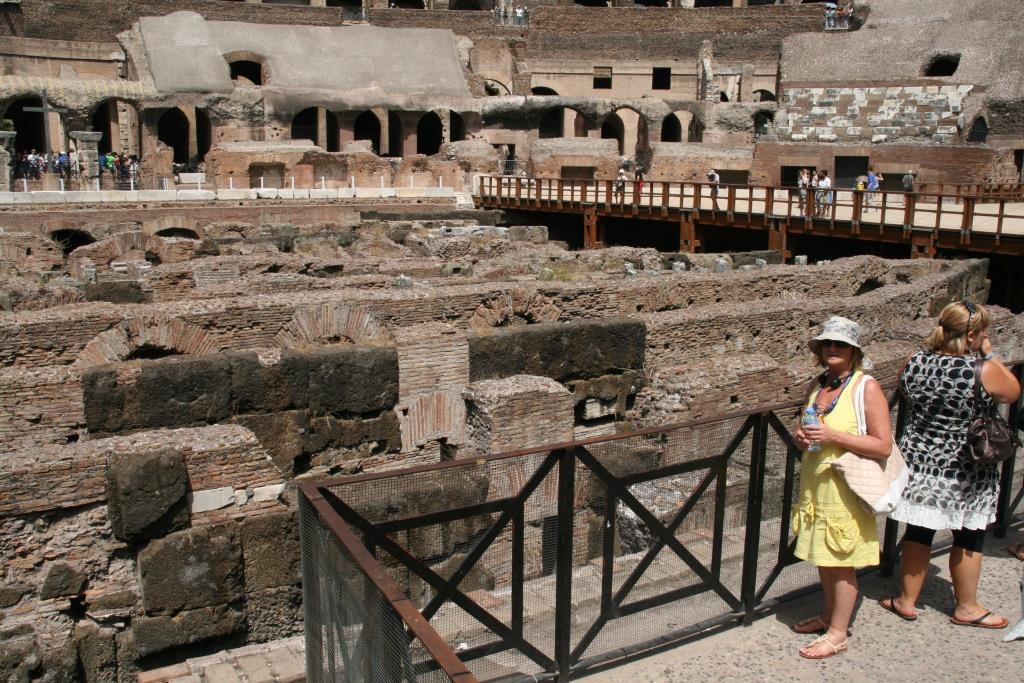
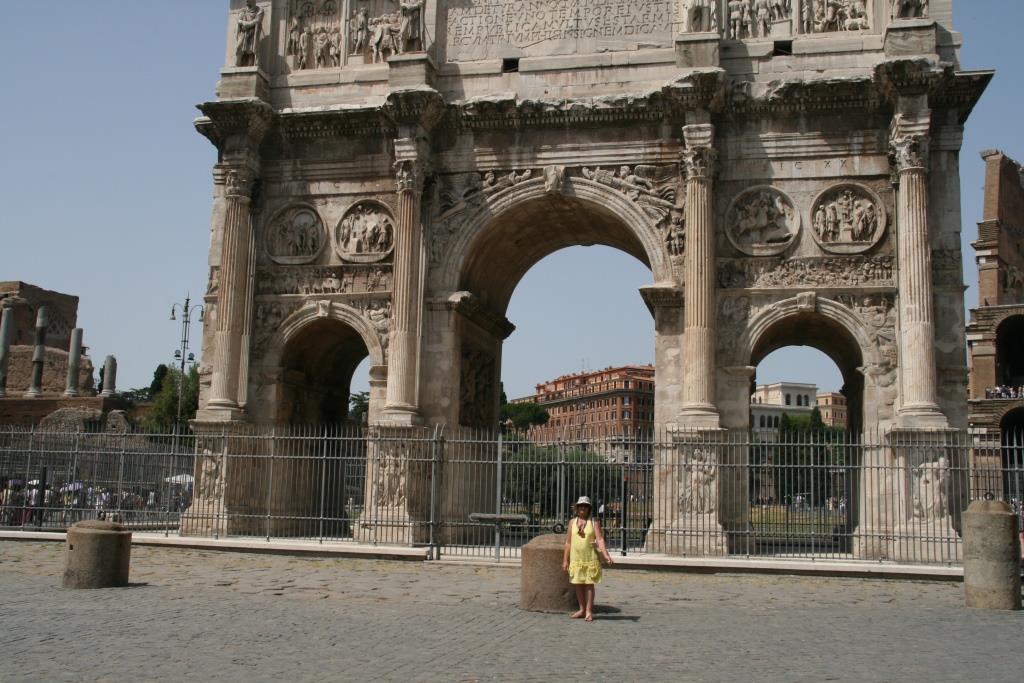
The Arch of Constantine is a triumphal arch in Rome, situated between the Colosseum and the Palatine Hill. It was erected by the Roman Senate to commemorate Constantine I's victory over Maxentius at the Battle of Milvian Bridge in 312; this is the largest Roman triumphal arch and spans the Via Triumphalis, the way taken by the emperors when they entered the city in triumph.
The Romans certainely knew how to celebrate in style when they were triumphant in battle; bearing in mind the success they had of the first 3-4 centuries AD this goes some way to explain why there are so many monument in Rome.
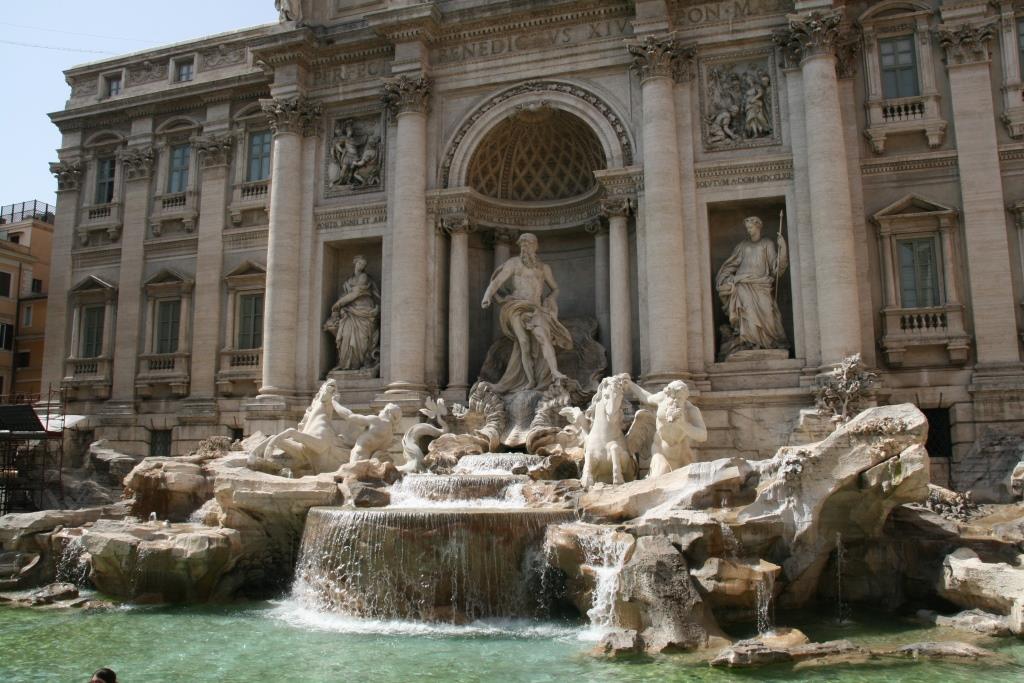
The Trevi fountain is a must visit for any tourist in Rome; as we approached it the sound of the water was deafening but well worth the visit. Legend holds that in 19 BC thirsty Roman soldiers were guided by a young girl to a source of pure water around thirteen kilometres from the city of Rome. The discovery of the source led the Emperor Octavius Augustus to commission Marcus Vipsanius Agrippa, his son-in-law, to construct an aqueduct, the Aqua Virgo or Virgin Waters, named in honour of the legendary young girl, to bring fresh water to the center of Rome. The aqueduct served the hot Baths of Agrippa, and Rome, for over four hundred years.
It is said that if you stand with your back to the fountain and throw in a coin with you right hand over your left shoulder you are destined to return to Rome; an estimated 3,000 Euros are thrown into the fountain each day and there are often attempts to steal the coins which is of course illegal.
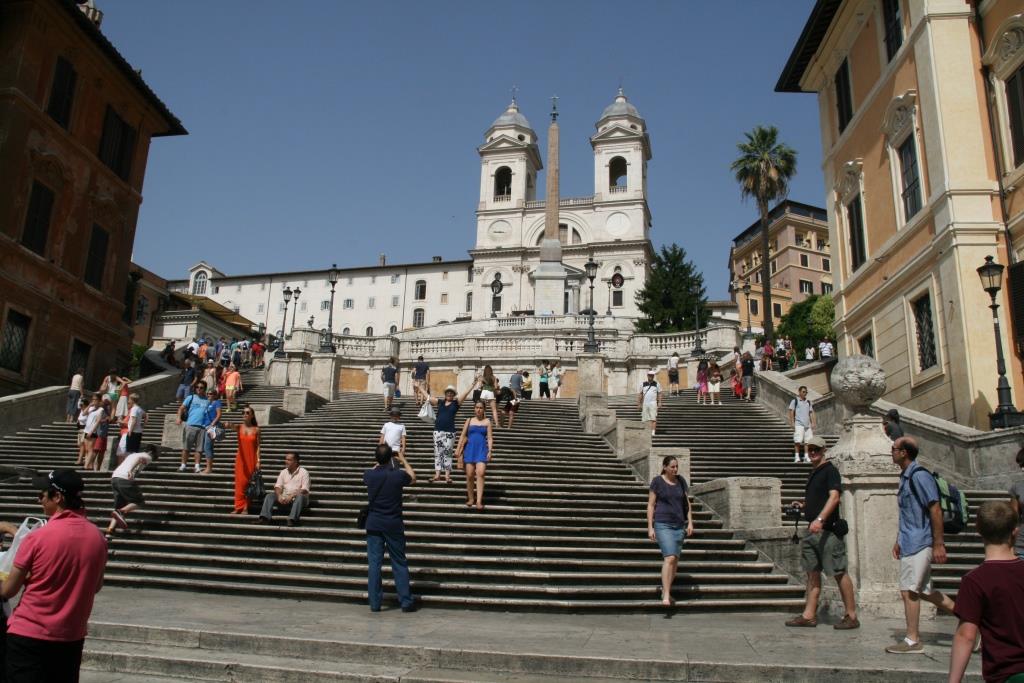
The Spanish steps, built in 1725 to link the the Trinità dei Monti church that was under the patronage of the king of France, with the Spanish square below. In the 17th century, the area around the embassy was even considered Spanish territory. The Spanish steps unique design and elegance has made it a popular place for artists, painters and poets; the artist’s presence attracted many beautiful women to the area, hoping to taken as models which in turn, attracted rich Romans and travellers. This tradition, of the Spanish Steps as a meeting place, has lived on ever since. Incidentally eating food on the steps is forbidden.
In 2007, a drunken young man attempted to drive a Toyota Celica down the Spanish Steps - he might at least have used a Fiat (LOL); no one was hurt, but several of the 200-year-old steps were chipped and scuffed. At the corner on the right as one begins to climb the steps, is the house where English poet John Keats lived and died in 1821 and unbelievably, in 1986, the first McDonalds restaurant in Italy was opened near the Spanish Steps.
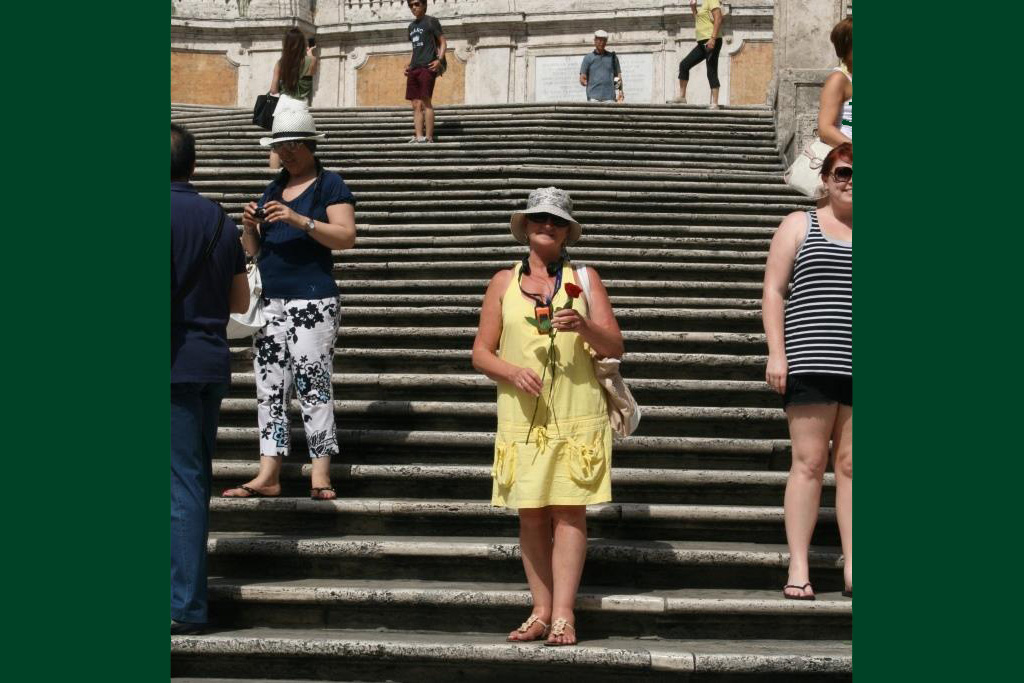
Jane at the foot of the Spanish Steps.
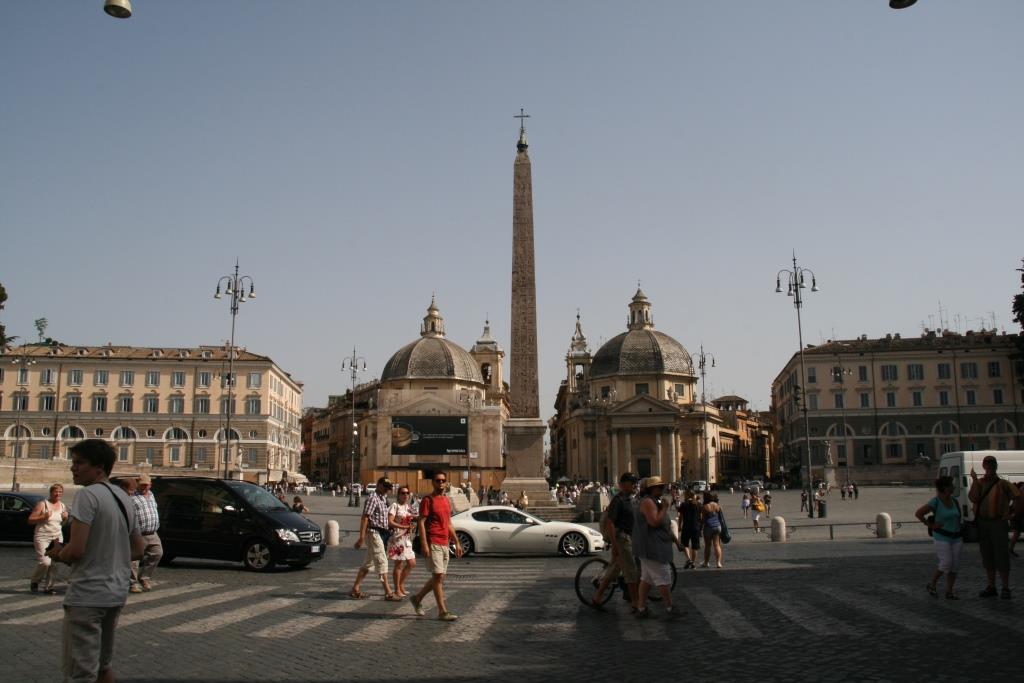
An Egyptian obelisk of Ramesses II from Heliopolis stands in the centre of the Piazza del Popolo. The 'Peoples Square' lies inside the northern gate in the Aurelian Walls, once the Porta Flaminia of ancient Rome and now called the Porta del Popolo, which was the starting point of the Via Flaminia, the road to Ariminum (modern-day Rimini). For years it was used as a place for public executions. The obelisk, originally built by Rameses in the 13th century BC was brought to Rome in 10 BC by command of Augustus.
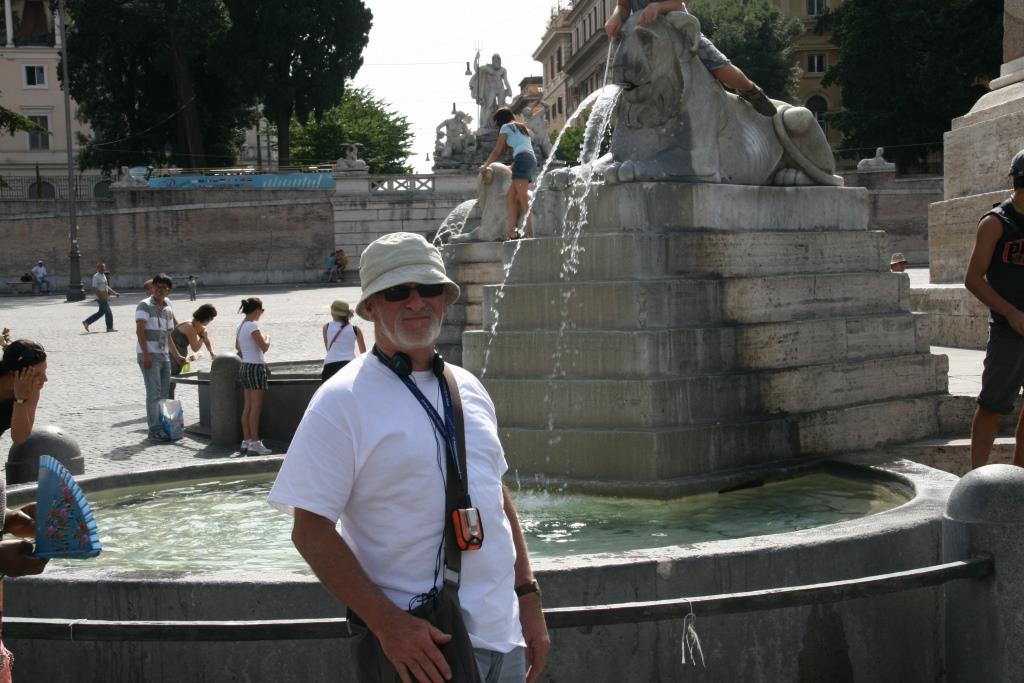
On the four corners of the obelisk are the Fontana dell' Obelisco which are statues of lions. Although now we see these statues from a tourist perspective, in Roman times these were an important source of fresh water brought in via an aquaduct. As you can see the piazza lives up to its name of the Peoples' Sq with children climbing all over the statues.
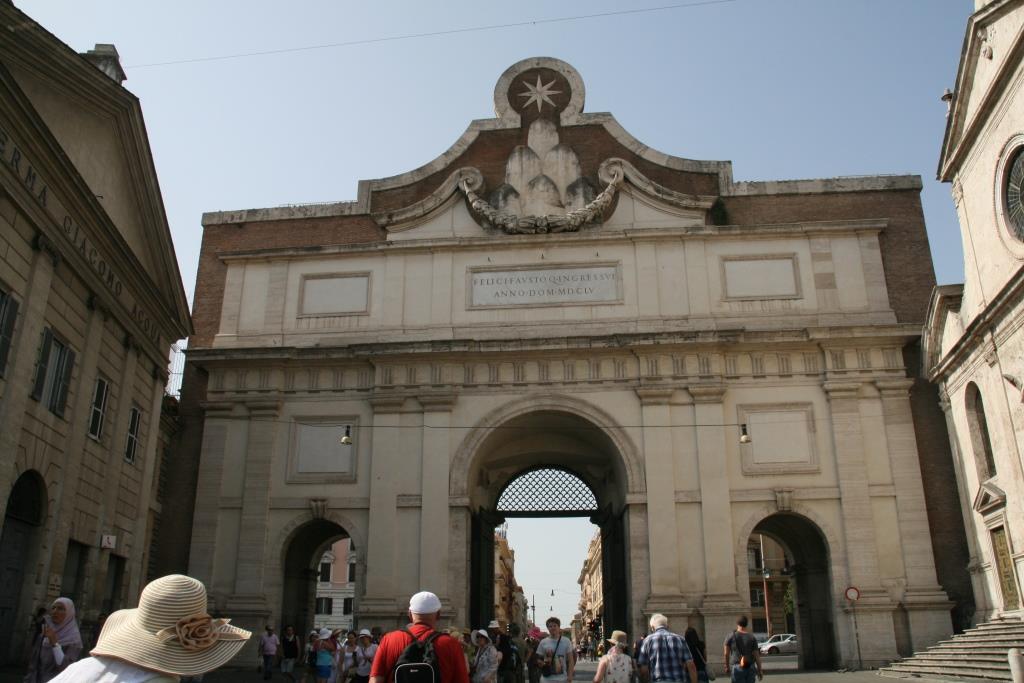
The Porta del Popolo - although this was the Porta Flaminia in Roman times, the current structure was built by Pope Sixtus IV for the Jubilee Year 1475 on the site of an ancient Roman gate which, at that time, was partially buried.
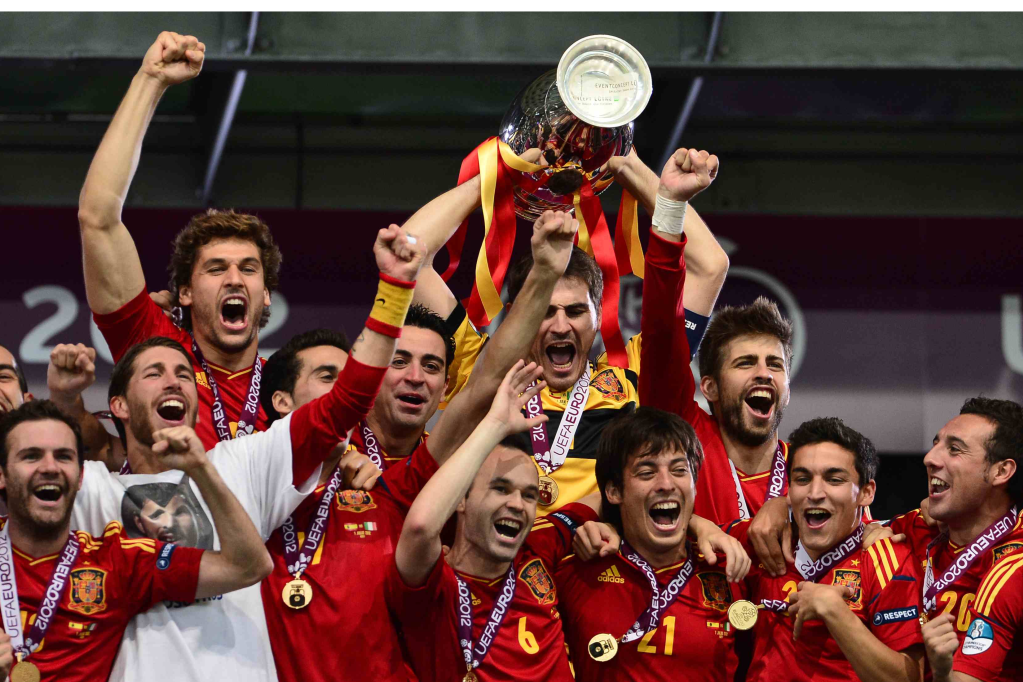
Our last experience during our stay at Fiuggi was to watch the Euro Cup final between Italy and Spain. The hotel owner had set up a big screen in the basement and we all sat there cheering for Italy, needless to say after their defeat of England on penalties in the quarter finals. The match took place on 1 July 2012 at the Olympic Stadium in Kiev and to be fair Spain were outstanding and won by 4 goals to nil. The hotel owner was magnanimous in defeat and we all commiserated with him over a few lemonades. All in all it was great fun and a good ending to our stay in Fiuggi.
 Last Slide
Last Slide